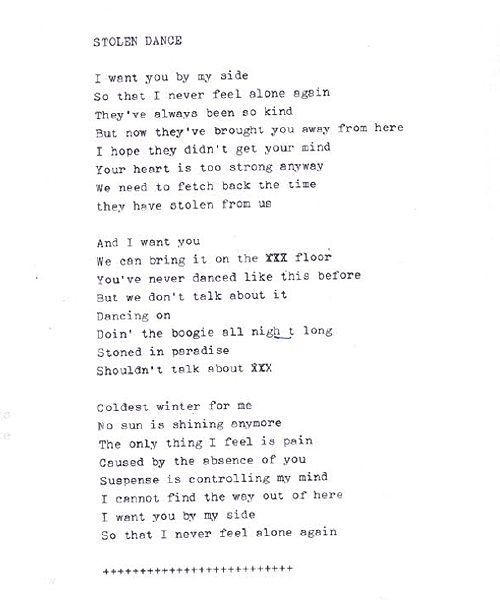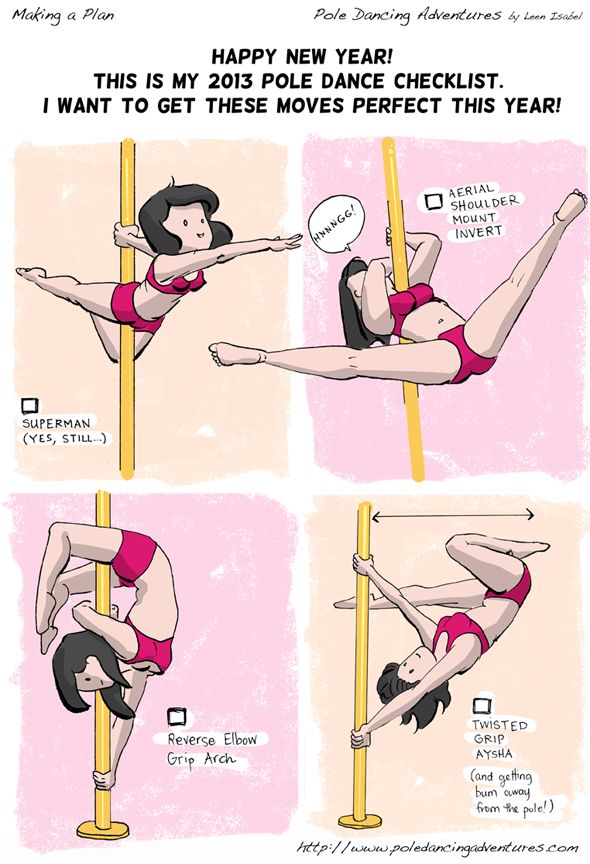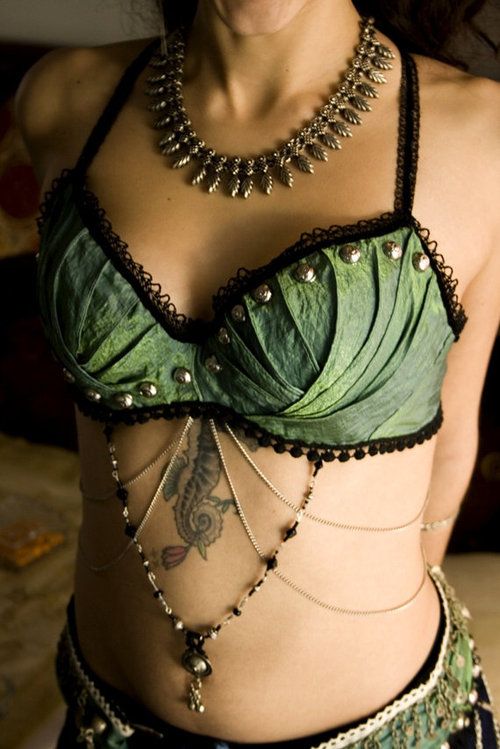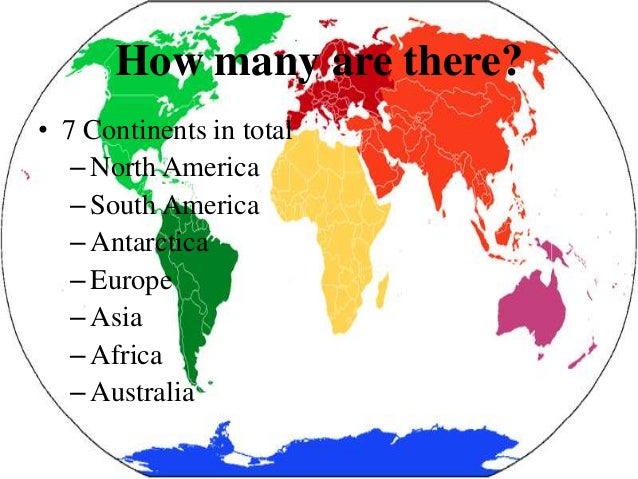How to change your size in mocap dancing
The Mocabulary - The vocabulary of mocap
Diva - A software made specifically for motion capture, by House of Moves.
IQ - a software made by Vicon for capturing and editing data.
Blade - the latest version of Diva. Replaces IQ. Handles scripting, editing, capture, solving, batching, retargetting, labelling of data.
Motion Builder - A software made specifically for motion capture by Alias.
Filmbox - Something old school mocap people sometimes call Motion Builder. Filmbox was the original name of the Motion Builder software.
EVA - The Motion Analysis software for capturing and editing data.
Pronounced - eeevaaahh
EVA rt - Another name for eva with an emphasise on realtime.
Pronounced - eeevaahh are tea
Calcium - A Motion Analysis software for solving data onto skeletons.
Giant, Vicon, Motion Analysis, NaturalPoint - companies that make and sell Passive Optical Motion Capture systems.
PhaseSpace - A company that makes and sells an Active Optical Motion Capture system.
Cortex - the latest Motion Analysis software. Replaces EvaRT
Performance Capture - the same thing as Motion Capture. usually refers to capture that includes face and body capture which has been aquired simultaneously during the capture process.
MOBU (slang) - the same thing as Motion Builder
Beat - A move that is captured. A motion capture 'Take'
SimulcamA - a live action camera whose position, rotation, orientation and movement is digitally recorded via some realtime external Motion Capture Solution that records the movements of markers placed on the live action camera. The movement of the simulcam is translated to a cg camera within a cg environment and the field of view of the cg camera can be composited in realtime into the viewfinder of the simulcamA. A SimulcamA has no limit on how it can move, as long as it stays within the Mocap Volume. SimulcamA was used on Avatar.
The movement of the simulcam is translated to a cg camera within a cg environment and the field of view of the cg camera can be composited in realtime into the viewfinder of the simulcamA. A SimulcamA has no limit on how it can move, as long as it stays within the Mocap Volume. SimulcamA was used on Avatar.
Encoded Camera - the same thing as a SimulcamA except the position, rotation, orientation and movement of the camera is recorded through the use of encoders that translate the analogue movements of the camera rig into digital translations and rotations. Encoded Cameras are limited in that motions can only be recorded if there is movement of some physical hardware (such as the movement of a camera mounted on a technocrane, or a camera mounted on an encoded dolly). Steadicam and hand held camera motion is not possible using an encoded camera solution. The General Lift 'Encoda Cam' solution is an example of encoded camera technology.
Realtime Camera Tracking - Calibrated patterns are placed around the set and a secondary camera is mounted to the live action camera in such a way so the patterns can be seen by the secondary camera.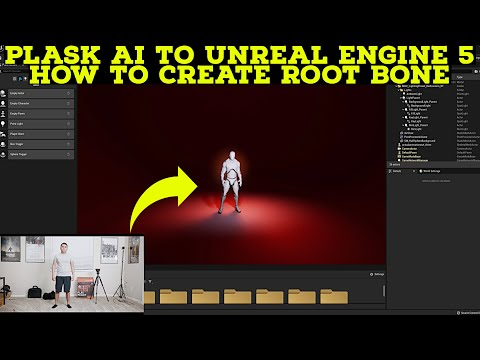 Software (and sometimes additional hardware) analyzes the secondary cameras view to determine the position, rotation, orientation and movement of the live action camera relative to the patterns. Can be hybridized with GPS to allow for camera tracking in any size area. The Prevision system is an example of a Realtime Camera Tracking system.
Software (and sometimes additional hardware) analyzes the secondary cameras view to determine the position, rotation, orientation and movement of the live action camera relative to the patterns. Can be hybridized with GPS to allow for camera tracking in any size area. The Prevision system is an example of a Realtime Camera Tracking system.
Realtime - usually refers to the instantaneous playback of the motion on cg characters or to the specialized software and hardware needed (E.G. "lets see the Realtime", or 'We need to restart the Realtime engine', or 'run Realtime and then calibrate the system'
other examples of usage:
"on a Vicon system, Realtime is possible when Motion Capture is processed through 'Tardis', their Realtime engine."
On a giant system, a software called 'Realtime' is used to process the Motion Capture Data in Real-Time.
On a MAC system, software called 'Cortex' handles Realtime but on a Phasespace system its the 'Owl' software.
Real-Time - usually refers to when something is happening.
(E.G. the realtime system displays motion capture animation in real-time)
Realtime Capture - see Realtime
Stage - the place where the volume is located.
The Volume - the area within which Motion Capture data can be aquired. Called a 'Volume' because the area has Length and Width and Height. (Example : 'the actor left the volume during the shot', or 'we need to split the shot up because we cannot fit the entire action into one volume')
Golden (slang) - when something is really good.
- as in 'the data is golden'
Smokin' Crack (slang) - when someone is asking for something that is less than ideal.
- as in 'the production team is smoking crack'
On the pipe (slang) - see 'smoking crack'
The Grid (slang)- the same thing as the volume.
Walking the grids (slang)- when we do multiple passes through 'the grid'
The Shadow Grid (slang)- the area outside the volume (see 'The Corral')
Sweet spot (slang)- the center of the volume where there is the most camera coverage
Hard Deck (slang) - The lowest down point in the volume that facial data can be captured, if it cannot be captured everywhere in the volume.
The Corral (slang) - the farthest outside the volume the actors can be for us to be able to get some usable amount of data that, while not ideal, may be possible to deliver.
The System - the Motion Capture software and hardware needed to capture data.
Mission Control (slang) - the place where all the data goes to be stored from 'the system'.
K19 (slang) - same thing as Mission Control
Fetching (slang) - when the system is transfering data from the Motion Capture hardware to the harddrive of the control computer in mission control. Only happens on non-realtime systems. Usually occurs when files are too large to be transmitted quickly to the control PC and data has to be buffered at the point of capture, until it can get written to the harddrive.
Only happens on non-realtime systems. Usually occurs when files are too large to be transmitted quickly to the control PC and data has to be buffered at the point of capture, until it can get written to the harddrive.
On The Fetch (slang) - when we are unable to capture and are waiting for fetching to finish.
-
- used on the stage to indicate that we will be waiting ad nasuem
Arming (slang) - when the system hardware is being prepared for the next take but is not yet ready to capture.
Mocap Ready - when arming is complete and the system and mocap team are standing by waiting to capture the next take
Roll Mocap - called by the Motion Capture Supervisor to tell the System Operator to activate the mocap system.
Mocap Speed - a verbal cue the Motion Capture system operator uses to indicate that the Motion Capture system has been triggered and is currently capturing. This cue is relayed verbally to the Motion Capture supervisor who in turn relays it to the production team so that Action can be called by the director.
This cue is relayed verbally to the Motion Capture supervisor who in turn relays it to the production team so that Action can be called by the director.
Copy roll mocap - called by the System Operator to indicate that the command to roll mocap was received and that the system is being triggered.
Cut Mocap - called by the 1st A.D. or the Motion Capture Supervisor to tell the System Operator to deactivate the mocap system
Marker Doon (slang) - yelled whenever a marker/dot/thingy that has fallen off of talent.
Talent - a Mocap Actor
Marker Checker - One of many PA's that check that we dont have a 'marker doon'
Good Markers - yelled by a Marker checker at the end of each take,
**indicates that all markers have been checked and none are 'doon'
Occlusive - to block a marker from camera view
Fetch 'n' go (slang) - an on-set verbal call the AD makes indicating that he wants to shoot another take right away
Shake 'n' bake (slang) - the same as fetch 'n' go
Triangulators (slang) - the Art department people on-set who are responsible for figuring out where things go in the volume to relate to the 3D environment
Zulu's (slang) - the mocap grip team
Zbar (slang) - metal pipes and connectors used to create mocap props and set pieces
Zulu platforms (slang) - mocap platforms that can be set to different heights
The Burka (slang)- a hooded robe that actors with markers on wear when they need to be in the volume, but we don't want to capture them
Jewels (slang)- a sphere covered in retroreflective tape - a motion capture marker
Dots (slang)- same as jewels
LED's - the ringlights on the front of a passive optical system. Some systems may also use LED's instead of spherical markers wrapped in retroreflective tape.
Some systems may also use LED's instead of spherical markers wrapped in retroreflective tape.
IR LED's - LED's that use a wavelength of 650 nanometers or higher so that they do not pollute the visible spectrum. Usually used so that actors arent blinded or so that the LEDS cannot be seen by a live action camera.
The Flush (slang)- When the systems software or hardware is turned off and back on, to clear out buffers.
M.O.M. (slang)- 'Mitte out mocap' - from the film term M.O.S. (mitte out sound). When we are shooting on stage without any motion capture.
The tentpole (slang)- a reference to the highest point in the 'sweet spot' - the center of the volume.
Guillotined (slang)- when an actor has gone above 'the tentpole' and their facial data cannot be recovered
Tee-Pose - standing position taken by actors at the start and end of beats.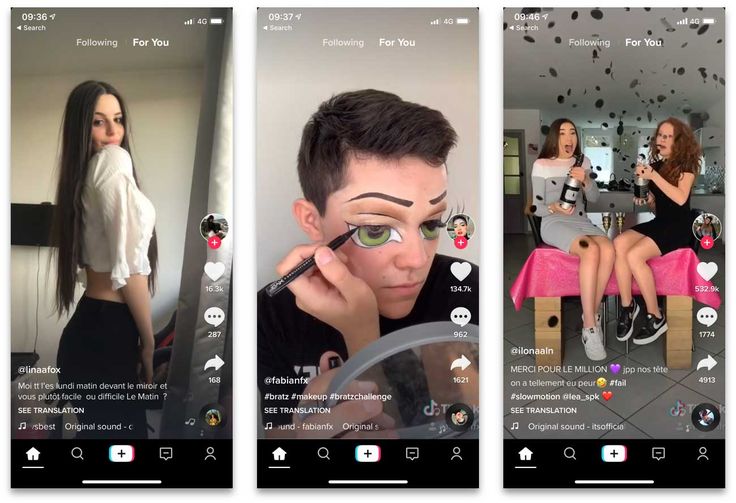
Init Pose – Same thing as a tpose
Knee-pose - a kneeling tpose.
Iron Cross (slang)- a sitting tpose.
Flying Tpose (slang)- a suspended tpose -** used for wire harness stunts
Safe Pie (slang)- a place where producers, directors and other on-set people stand during the shoot so that they do not occlude markers from the cameras. So called because the camera fields of view usually overlap leaving small triangular sections at the edges that are not within any cameras field of view.
Get some pie (slang)- A command given for all on-set personal to clear the volume and move to safe pie.
Chicken Noodle (slang)- When we have finished shooting a beat and are moving on. A bastardization of the film expression 'Checking the Gate, New Deal'
Moving on (slang)- the same thing as chicken noodle.
Mocap Ready (slang)- When the mocap system is ready to capture another beat.
Beat name - the file name of each beat.
Retroreflective Sensor Engineer(slang) - people that do our dirty work for us. - see dot farmer or mocap P.A.
Dot Farmer (slang)- a person who wraps markers in reflective material.
Gnomes (slang)- the nomenclature used to name a beat.
Looking for Gnomes (slang)- we are waiting for the beat nomenclature to be called in to mission control
Tom Jones foam (slang)- soft round tubal foam that is used to pad the corners of sets and props to make them safer for actors
Pool Noodle (slang)- same thing as Tom Jones foam. Usually a floatational toy for children (called a Pool Noodle) that is cheap and can be used in a variety of ways to pad props or sets.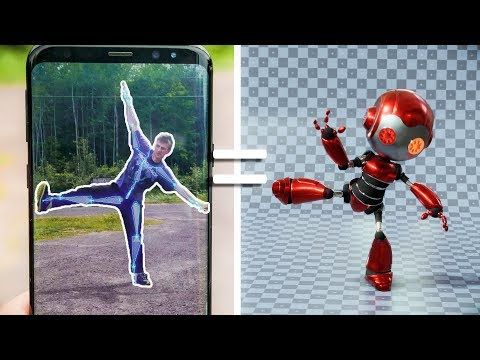
Fear Stick (slang)- a large stick with tom jones foam or a Pool Noodle on the end of it - used to hit actors with to make them react appropriately during shots
Kill Stick (slang)- same thing as a Fear Stick
Mocap Friendly (slang)- When something is not reflective and can safely be brought into the volume
-
- as in ' My shoes are mocap friendly'
Calibrate -to register and map the position of Motion Capture sensors in the real world relative to positions within a computer scene.
Calibrate the Cameras or Calibrate the System- Part of the process of turning on the mocap system so that the mocap cameras positions can be determined relative to the volume and one another. Camera calibration is required for Motion Capture to work properly. Usually camera calibration is achieved by recording the position and movement of one or more calibration objects.
-
- as in 'We have calibration' or ' We are now calibrated' is often used to indicate the system is now ready to capture
Dynamic Calibration - A camera calibration technique where the movement of a calibration object is recorded as it is moved around the extents of the Motion Capture Volume.Requires multiple frames to work. Usually provides lens distortion for the cameras and helps improve the static calibration results. May be done before or after static calibration. Is usually required whenever a camera is moved.
Wand the Volume - to obtain a dynamic calibration using a calibration device know as 'the wand'
Static Calibration - a camera calibration technique where the static position of a calibration object is recorded. Only a single frame is needed. Not as robust as dynamic calibration. Provides no lens distortion information. Only used to triangulate the cameras initial positions in the room relative to one another and the static calibration device.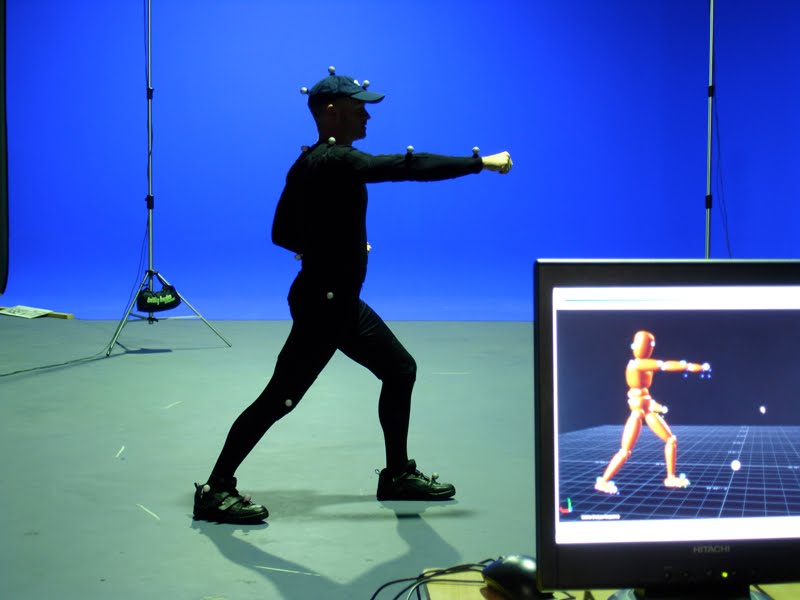
Wand - a dynamic calibration device. usually one or more markers on a long stick. Usually looks like a big T.
LFrame - a type of static calibration device. Shaped like an L. Usually has 4 markers.
Floor Calibration - a method used to determine the slope of the floor of the volume, relative to the cameras. Markers are usually placed around the edges of the volume and a single frame of data is captured.
Cube - a type of static calibration device. Shaped like a big wireframe cube with markers at each corner of the cube. Usually has 8 markers.
ROM the Actor - to aquire a Range of Motion (ROM) where the actor moves through a series of movements used to calibrate a cg character skeleton. A Required step for realtime capture, marker labelling. Helps with, but is not essential for, skeletal solving and character rigging.
Calibrate the Actor Skeleton - When the actors rom is analyzed so that the system can recognize the size, shape and movement of each actors markers. A CG skeleton is aligned within the marker data and posed to match the actors posture as closely as possible. The offsets and mapping between the markers and the bones they are meant to animate is determined and then maintained over time, so that the markers are able to directly rotate and translate the skeleton around the volume.
A CG skeleton is aligned within the marker data and posed to match the actors posture as closely as possible. The offsets and mapping between the markers and the bones they are meant to animate is determined and then maintained over time, so that the markers are able to directly rotate and translate the skeleton around the volume.
Calibrate the Character - to align an Actor Skeleton with its intended target Character Skeleton. The pose and position of the two skeletons are manually aligned as closely as possible and the offsets between the two are determined and then maintained over time. A required step for Realtime.
Prop Calibration - The same process used to calibrate an actor skeleton is applied to props. The major difference being that rigid props can be calibrated from a single frame of capture and do not require the same kind of ROM that actors do.
Set Calibration - The same process as prop calibration
The Rig - the structure we mount the cameras to
Bump the Rig -When someone hits the rig and ruins the Calibration
-
- as in - 'we've had a rig bump' or 'someone bumped the rig'
Giraffe (slang)- an eyeline pole worn by someone when they are playing a character much taller than they are
Snorkle(slang)- same thing as a Giraffe
Hanging chad (slang)- when a marker is dangling on an actor but has not yet fallen off
Universal Master (slang)- a facial only capture that will be pasted onto a body capture that is done seperately
ROM - a range of motion performed by the actor used to set up their digital counterpart
Face Rom - a ROM for the face
MGM Roar (slang)- same as a face rom
Long Rom - a very complete body ROM.
-
- May sometimes include a face rom.
Mocaparana (slang)- same thing as a long rom
Mocap - pokey(slang)- same thing as a long rom
Short Rom - an short and usually not as complete body ROM
-
- May sometimes include a face rom
Chicken Dance (slang)- Same thing as a short Rom
Schmutz (slang)- anything that gets on a marker and negatively effects it's reflectivity.
Schmutzy Markers (slang)- markers that are covered in schmutz
Dangler (slang)- same thing as a 'hanging chad'
Dangling Participle (slang)- same thing as a dangler
Slider (slang)- when a marker has slide out of position on an actors face but has not yet fallen off.
Hitchiker (slang)- when a marker has tranferred from one actor to another, but has not fallen off
Shear (slang)- when a marker has been sliced in half so that the reflective spherical part falls on the floor but the base stays on the talent
Sweep the volume (slang)- to look through the capture area, using flashlights, to try and find any reflective objects that have fallen on the floor
Foodify (slang)- to cover a marker with food (see schmutzy markers)
Foodification(slang) - when markers have been foodified
Chocolification (slang)- same thing as foodify (except usually involving chocolate)
Scolari (slang)- to violently remove one's own facial markers during a beat.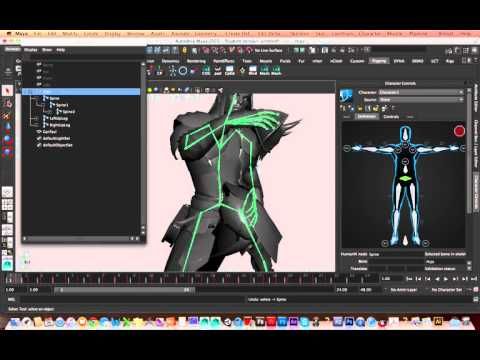 Named after Peter Scolari.
Named after Peter Scolari.
Rocher (slang) - to violently remove one's own facial markers during a love scene. Named after Sebastian Rocher.
Cheese Grater (slang)- something that causes a 'scolari'. as in ' these burkas are a bit of a cheesegrater'
Take a Heder (slang)- to seriously injure oneself during a take. Named after John Heder.
Monkey Paw (slang)- a hand calibration pose where actors curl the first digit of their fingers and thumb all the way down to touch their palm
Jazz hands (slang)- a hand calibration pose where actors splay their fingers and thumbs outwards from their palms
Fists of fury (slang)- a hand calibration pose where actors clench their fists tightly.
Horsie Carpet(slang) - the carpet used when horses are in the volume
Hero Carpet (slang)- the carpet used for 'hero' talent
Stunt Brothers (slang)- the stunt team
Close the Blast doors (slang)- to close the curtain leading to the mocap volume
DLO (pronounced dee-low) - the 'directors layout' of motion capture.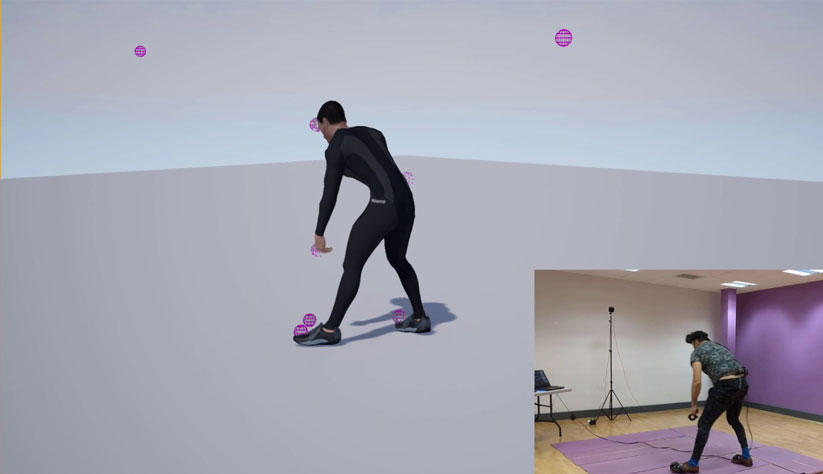 When the director captures or approves the final camera for a shot. DLO is done on shots that have been through RLO.
When the director captures or approves the final camera for a shot. DLO is done on shots that have been through RLO.
Directors Layout - required if the director creates shots in post, using a virtual camera in 3D, from an assembly of motion capture beats
DLO camera - the approved virtual camera move that came out of DLO for a particuler shot.
RLO (pronounced ar-low) - 'Rough layout' of the motion capture into scenes that can then be used for DLO.
Integration - the final assembly stage of the all the assets into shots that can be passed on to the next stage of the pipeline (*usually keyframe animation). Integration produces files that contain the DLO camera and all the motion capture cleaned and edited with and all other cg assets into one file ready for the animation team.
Native (slang)– when the motion being used came from the same beat
Non-native (slang) - when the motion being used came from some other beat
Face-paste (slang)– when the face is non-native to the body.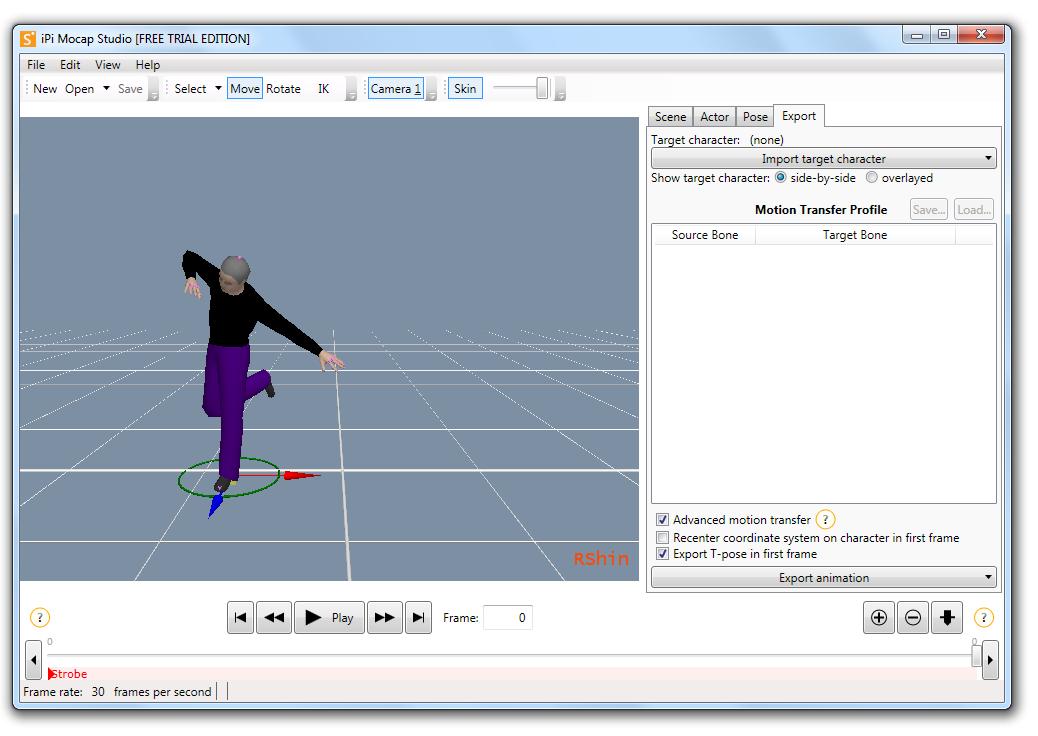
Recycle (slang)- to go out of one side of the volume and come back around the outside to go back through again. See also 'Walking the Grids'
Stray (slang)- A marker that detatches itself from an actor a set or a prop and appears on the floor of the volume. (Same thing as a 'Marker Doon')
Mystery Marker (slang)- A stray marker whose origins are unknown.
Image Eye (slang)- A motion capture technique for capturing an actors eye movements using external sensors. Uses EOG technology.
EOG - Electro-oculography. Recording the electrical impulses of the eye muscles and the positive and negative charge of the eyeball itself, relative to sensors placed around the eye.
Helmet Cam (slang)- A motion capture system in a helmet. May consist of one or more cameras.
HeadRig (slang) - Same thing as a Helmet Cam.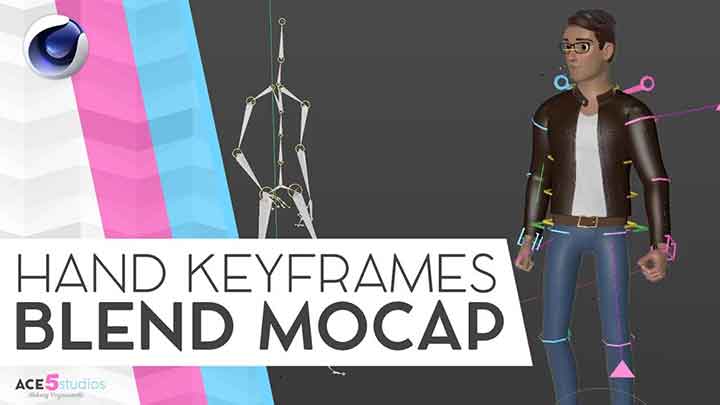
HMC(slang) - Head Mounted Camera. Same thing as Helmet Cam
Head Cam (slang)- same thing as Helmet Cam
EOGEEMA (slang)- when the eye data ,from one or more actors, is no good.
Punk'd (slang)- when a marker is covered by a stunt harness
L.L.I. (slang)- When a beat meets the approval of the script supervisor. Stands for 'Luca likes it'. Named for Luca Kouimelis.
L.O.L. (slang)- indicates that we will be shooting one more take in the current sequence before we move on. Stands for 'Last one Luca'. Named for Luca Kouimelis. Pronounced - ell oh ell
PC (slang)- Primary Capture, of hero talent, see library capture.
PB (slang)- Primary Bank . To capture primary talent for later use, in case it is needed for shot composition, see library capture.
BB (slang)- Backround Bank.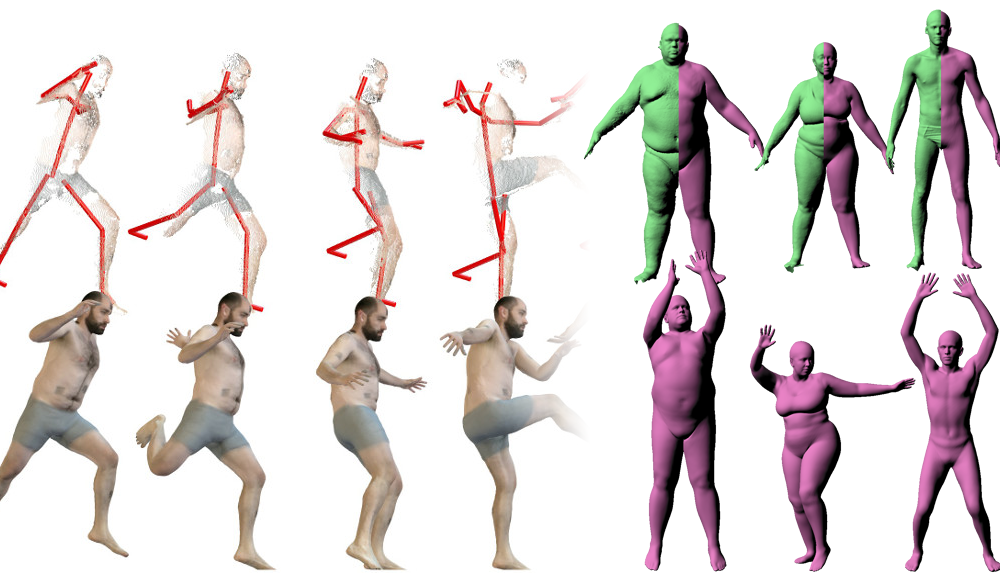 To capture background talent for use later, see library capture.
To capture background talent for use later, see library capture.
Background Capture (slang)- capture of the movement of secondary actors and their motions.
Library Capture (slang)- To capture a beat for use in a motion library.
Motion Library (slang)- a sequence of beats that can be blended together to make longer motions or used to fill in missing portions of other beats.
Good Eyes or Eyes are good (slang)- called to indicate that the system properly captured the eye data from the previous take. Also used to indicate that the eye system is ready to capture the eye data for the next take.
Good Face or Face is Good. - (slang) called to indicate that the system properly captured the facial data from the previous take
Raw data (slang)– data when it is first generated and has not yet been touched by human hands.
Viz (slang)– to label motion capture data
Clean (slang)– to close gaps and remove noise from motion capture data
Solve (slang)– to turn positional data into rotational data such that it matches the object captured fairly closely in size and shape. (example - Motion Capture for Keany Reeves was solved onto the CG Neo Model)
Retarget (slang)- to map solved motion from the object being captured to an object that does not match it. (example - The Motion Capture for Happy Feet had to be retargetted from the human actors to the Penguin characters to make them move correctly). Sometimes Mocap data can be solved and retargetted all in one step. Other times its better to first solve the motion to a skeleton that matches the actor exactly and then retarget the motion from that skeleton to the characters skeleton as the result can be manipulated more during the retarget.
Data Editing , Cleaning Data or Marker editing (slang)- to modify the motion capture data that came out of the motion capture software in order to create smooth, gap free trajectories that represent the movements of the markers. Occurs after tracking.
Occurs after tracking.
Tracking (slang)- the same thing as data editing. Something usually required during the processing of optical marker data. Tracking is the labelling step for any data that the system generated. Sometimes software is able to complete the tracking phase without human intervention but in many cases a human is required to manually intervene to produce fully tracked motion capture data.
Motion Editing (slang)- to edit, blend or change one or more Motion Capture beats to create new motion that was not captured or to remove any unwanted artifacts from skeletal motion.
Scaling (slang)- to change the size of CG model larger or smaller.
Scale the data (slang)- to change the size of the motion capture data. Mocap is often scaled up or down to match the character dimensions better, prior to solving.
Merge -(slang) The process of merging multiple data streams of capture into one file for processing. On an optical system, the camera data may need to be merged before it can be processed.
On an optical system, the camera data may need to be merged before it can be processed.
TimeWarp (slang)- to speed up or slow down the data without altering the playback speed of the take.
Moven Suit - A name the Xsens MVN suit used to be called.
MVN Suit - a self contained, wearable, inertial motion capture solution consisting of a suit containing multiple inertial devices that captures the movements of an actor.
XSens - the company that makes the MVN suit
Identification Model of Writhing Posture of Classical Dance Based on Motion Capture Technology and Few-Shot Learning
On this page
AbstractIntroductionRelated WorkConclusionsData AvailabilityConflicts of InterestReferencesCopyrightRelated Articles
Chinese classical dance is cut into the inner verve from a grasp of external form in dance instruction, and the aesthetic fashion and artistic norms of classical dance are established with historical depth. The “professional specificity” of characters and the “language description” of plots are eliminated in Chinese classical dance creation, highlighting the contemporary spirit of classical dance creation. Chinese classical dance was born during the early years of the People’s Republic of China. The term “classical dance” did not refer to all Chinese classical dances at the time; rather, it referred to a dance form that embodied China’s national spirit and had a classical cultural heritage based on Chinese traditional dance. The average frequency of step-over was 0.9, which was higher than the average rate of basic turnover of 0.75 and step-by-step turnover of 0.5, according to the results of the SPSS19.0 analysis. As a result, except for a few points with loud noise, it can be concluded that stepping over is an effective feature. The recognition model of the somersault posture of classical dance is studied in this paper, a database for real-time acquisition of three-dimensional data of human motion is established, and the Google model of human body characteristics is obtained based on feature plane matching of human body posture, all using motion capture technology and few-shot learning.
The “professional specificity” of characters and the “language description” of plots are eliminated in Chinese classical dance creation, highlighting the contemporary spirit of classical dance creation. Chinese classical dance was born during the early years of the People’s Republic of China. The term “classical dance” did not refer to all Chinese classical dances at the time; rather, it referred to a dance form that embodied China’s national spirit and had a classical cultural heritage based on Chinese traditional dance. The average frequency of step-over was 0.9, which was higher than the average rate of basic turnover of 0.75 and step-by-step turnover of 0.5, according to the results of the SPSS19.0 analysis. As a result, except for a few points with loud noise, it can be concluded that stepping over is an effective feature. The recognition model of the somersault posture of classical dance is studied in this paper, a database for real-time acquisition of three-dimensional data of human motion is established, and the Google model of human body characteristics is obtained based on feature plane matching of human body posture, all using motion capture technology and few-shot learning. The above data has good reference and application value for improving teachers’ teaching level and arousing students’ learning enthusiasm in the dance teaching process when applied to posture teaching and analysis. The captured data can convert human motion in real three-dimensional space into data in virtual three-dimensional space. Motion capture technology converts human motion information into a technology that can be recognized by computers.
The above data has good reference and application value for improving teachers’ teaching level and arousing students’ learning enthusiasm in the dance teaching process when applied to posture teaching and analysis. The captured data can convert human motion in real three-dimensional space into data in virtual three-dimensional space. Motion capture technology converts human motion information into a technology that can be recognized by computers.
1. Introduction
Chinese classical dance is made up of traditional Chinese opera, dance, martial arts, and ancient art resources that are mined, screened, and integrated. “Twist, tilt, circle, curve, form, spirit, strength, and law” are the overall requirements and prominent features of Chinese classical dance, and these eight words evolve into posture and movement law through waist movement [1]. Second, in dance creation, Chinese classical dance should be cut from the understanding of external form to the understanding of internal charm, and the aesthetic fashion and artistic norms of classical dance have been established with historical depth; third, in dance teaching, Chinese classical dance should be cut from the understanding of external form to the understanding of internal charm, and the aesthetic fashion and artistic norms of classical dance have been established with historical depth; and fourth, in dance creation [2, 3], Chinese classical dance should be cut from the “profession specificity” of character images and the “ Opera,” which contains the living fossil of dance inheritance, was studied and learned by the founders of Chinese classical dance. The development of opera is perhaps a tributary in the great Chinese culture, but it is the most clear and complete [4]. The origins of Chinese classical dance can be traced back to the early days of the People’s Republic of China. At the time, the term “classical dance” did not refer to all Chinese classical dances; rather, it referred to a dance form that embodied China’s national spirit and had a classical cultural heritage based on Chinese traditional dance. When we consider that history, we cannot help but think of Mr. Ouyang Yuqian. He actively advocated for dancers learning the fundamental skills of Chinese opera, as well as studying and distinguishing Chinese classical dance from basic opera dance, and this suggestion was taken into consideration and implemented in the curriculum of the first dance school in New China [5, 6].
The development of opera is perhaps a tributary in the great Chinese culture, but it is the most clear and complete [4]. The origins of Chinese classical dance can be traced back to the early days of the People’s Republic of China. At the time, the term “classical dance” did not refer to all Chinese classical dances; rather, it referred to a dance form that embodied China’s national spirit and had a classical cultural heritage based on Chinese traditional dance. When we consider that history, we cannot help but think of Mr. Ouyang Yuqian. He actively advocated for dancers learning the fundamental skills of Chinese opera, as well as studying and distinguishing Chinese classical dance from basic opera dance, and this suggestion was taken into consideration and implemented in the curriculum of the first dance school in New China [5, 6].
Motion capture system can track, monitor, and record human motion data. At present, it has been preliminarily applied and developed in entertainment effectiveness, health record, rehabilitation training, and other aspects [7, 8]. Motion capture is a process of acquiring the size measurement, position, and direction information of moving objects so as to realize further research. Since the 1970s, motion capture has been an important method of photographic image analysis in biomechanics research, and since then, this technology has been more and more widely used in animation, robot control, human-computer interactive games, sports training, and other fields [9]. The motion capture system is mainly composed of sensors, signal acquisition equipment, data transmission, and data processing, including mechanical, electromagnetic, and optical. The adopted motion capture equipment is an optical motion capture system with high precision and good stability, which has achieved ideal results in the process of collecting Xinjiang Uygur dance data [10, 11]. The dance data collected by the motion capture system is input into the 3D animation software and can be displayed perfectly through the virtual display engine [12]. Motion capture technology is a rapidly developed technology in the last 20 or 30 years.
Motion capture is a process of acquiring the size measurement, position, and direction information of moving objects so as to realize further research. Since the 1970s, motion capture has been an important method of photographic image analysis in biomechanics research, and since then, this technology has been more and more widely used in animation, robot control, human-computer interactive games, sports training, and other fields [9]. The motion capture system is mainly composed of sensors, signal acquisition equipment, data transmission, and data processing, including mechanical, electromagnetic, and optical. The adopted motion capture equipment is an optical motion capture system with high precision and good stability, which has achieved ideal results in the process of collecting Xinjiang Uygur dance data [10, 11]. The dance data collected by the motion capture system is input into the 3D animation software and can be displayed perfectly through the virtual display engine [12]. Motion capture technology is a rapidly developed technology in the last 20 or 30 years. Many domestic and foreign researchers have invested a lot of scientific research efforts in this field and obtained advanced scientific research results and rich theoretical support in many aspects, including the way and application of motion capture, the analysis of real-time motion data, and the analysis of motion posture.
Many domestic and foreign researchers have invested a lot of scientific research efforts in this field and obtained advanced scientific research results and rich theoretical support in many aspects, including the way and application of motion capture, the analysis of real-time motion data, and the analysis of motion posture.
This paper proposes to apply the motion capture technology to the tumbling posture recognition model of classical dance, establish a database to obtain the three-dimensional data of human motion in real time, and match the human posture based on the feature plane to obtain the Google model of human characteristics. Applying the above data to the posture teaching and analysis in the process of dance teaching is helpful to improve the teaching level of teachers, Mobilizing students’ learning enthusiasm has good reference and application value [13, 14]. Human motion posture analysis first rose abroad. With the advent of the new century, Chinese domestic research experts also began the research and analysis of three-dimensional posture [15].
This paper studies and innovates the above problems from the following aspects:(1)A writhing gesture recognition model of classical dance based on motion capture technology is proposed. This paper studies the identification model construction of the tumbling posture of classical dance. The combination of motion capture technology and the tumbling posture of classical dance will make up for the deficiency of traditional dance forms and has advantages that traditional dance does not have in the acquisition and transmission of movement skills. According to one’s own state, one can study and demonstrate actions purposefully and then compare the analysis results of 3D motion data with the standardized action posture so as to correct the standardization of actions in time, which greatly improves students’ learning and teachers’ teaching efficiency.(2)Build the database of the identification model of the tumbling posture of classical dance based on motion capture technology. Based on the application of motion capture technology to the identification of the tumbling posture content of classical dance, firstly, set the performer’s dance movements and their range of motion; then, capture the three-dimensional data of the performer’s dance movements and establish a three-dimensional dance teaching model database. Finally, make the dance movement database into a three-dimensional animation and apply it to the identification model of the tumbling posture of classical dance.
Finally, make the dance movement database into a three-dimensional animation and apply it to the identification model of the tumbling posture of classical dance.
The paper is divided into five parts, and the organizational structure is as follows:
The first chapter introduces the research background and present situation of the tumbling posture of classical dance and puts forward and summarizes the main tasks of this paper. The second chapter introduces the domestic and foreign related work of the somersault posture of classical dance. The third chapter introduces the principle and model of motion capture technology. In chapter 4, the realization of the recognition model of tumbling posture of classical dance based on motion capture technology is introduced, and the performance of the model is compared through experiments. The fifth chapter is the full text summary.
2.1. Research Status at Home and Abroad
Gaglio et al. proposed that the first trouble for Chinese classical dance to recognize the posture from opera is the contradiction between “stylized dance and functional training,” which is the basic contradiction in the construction of Chinese classical dance teaching materials, which has not been completely solved until today [16].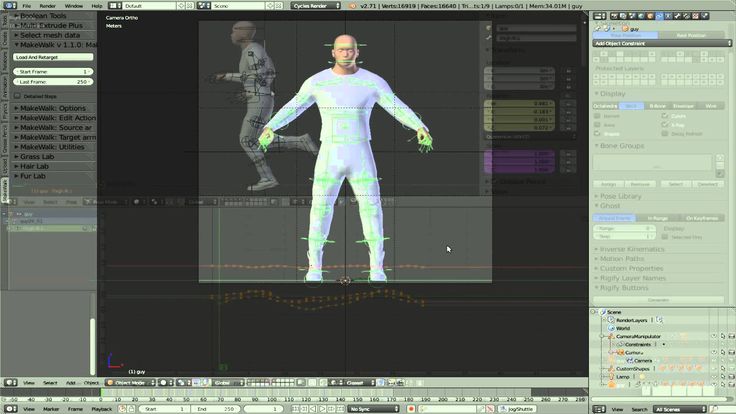 TNA B proposed that the formation of “form” of Chinese classical dance was fundamentally influenced by ancient traditional concepts, mainly the concept of nature, and human natural activities affected the formation of artistic aesthetics and aesthetic ideas [17]. Shiqi et al. proposed that Mr. Mei Lanfang, an opera performing artist, is known as a male actress. When limited by certain clothing, props, and roles, how to shape the stage image of women’s posture through a beautiful, “exquisite,” delicate, and “language” orchid palm has become an art form integrating the song, dance, and music of the previous generation [18]. Nai et al. proposed that classical dance comes from the burst of emotion, and Oriental people have formed a unique way of posture expression under the influence of traditional ideas. Easterners are not used to expressing their feelings directly like the West, but in a gentle and implicit way, which stems from the naive, simple, and restrained emotional thinking of farmers in the bones of Easterners [19].
TNA B proposed that the formation of “form” of Chinese classical dance was fundamentally influenced by ancient traditional concepts, mainly the concept of nature, and human natural activities affected the formation of artistic aesthetics and aesthetic ideas [17]. Shiqi et al. proposed that Mr. Mei Lanfang, an opera performing artist, is known as a male actress. When limited by certain clothing, props, and roles, how to shape the stage image of women’s posture through a beautiful, “exquisite,” delicate, and “language” orchid palm has become an art form integrating the song, dance, and music of the previous generation [18]. Nai et al. proposed that classical dance comes from the burst of emotion, and Oriental people have formed a unique way of posture expression under the influence of traditional ideas. Easterners are not used to expressing their feelings directly like the West, but in a gentle and implicit way, which stems from the naive, simple, and restrained emotional thinking of farmers in the bones of Easterners [19]. The authors proposed that Chinese classical dance is a genuine domestic product and a new kind of dance comparable to modern dance and ballet. Most of its soundtrack is played with musical instruments with Chinese characteristics, such as pipa, erhu, guzheng, and Xiao, and the clothing usually has a smell of ancient fragrance [20]. Deng et al. proposed that the historical and cultural spirit precipitated in opera and dance is in the same line with the spirit of China’s 5000-year-old traditional culture. We absorbed the orchid palm from it and drew lessons from and cited the “nonphysical performance” in the drama dance performance, which uses hand movements and human body posture with eyes, body method, pace, and so on [21]. Pope et al. put forward that the traditional poetry contains the ancient people’s aesthetic thought activities in the aspects of appreciation and creation, which has a certain influence on the formation and development of Chinese classical dance [22]. Maheu et al. proposed to stand on the vision of the discipline construction of Chinese classical dance.
The authors proposed that Chinese classical dance is a genuine domestic product and a new kind of dance comparable to modern dance and ballet. Most of its soundtrack is played with musical instruments with Chinese characteristics, such as pipa, erhu, guzheng, and Xiao, and the clothing usually has a smell of ancient fragrance [20]. Deng et al. proposed that the historical and cultural spirit precipitated in opera and dance is in the same line with the spirit of China’s 5000-year-old traditional culture. We absorbed the orchid palm from it and drew lessons from and cited the “nonphysical performance” in the drama dance performance, which uses hand movements and human body posture with eyes, body method, pace, and so on [21]. Pope et al. put forward that the traditional poetry contains the ancient people’s aesthetic thought activities in the aspects of appreciation and creation, which has a certain influence on the formation and development of Chinese classical dance [22]. Maheu et al. proposed to stand on the vision of the discipline construction of Chinese classical dance. The original intention of the course construction of body rhyme is to deepen the national attributes of Chinese classical dance styles, but it is still the historical mission of the discipline to cultivate the actors’ body posture, and it is also an important project for the discipline to continuously inherit and spread the faculty with cultural heritage and professionalism [23]. Christopher et al. put forward that “the basic ability training of Chinese classical dance refers to the basic ability training and special quality training of all parts of body posture.” The basic skills training of Chinese classical dance mainly focuses on three aspects: strengthening the training of softness, training of quality and ability, and training of technical skills. From the ground, the lever, and the middle three parts, the soft opening strength of students and their technical skills can be solved [24]. Xuan et al. put forward that the body rhyme of Chinese classical dance should not only have the style of Chinese traditional body culture, but also conform to the scientific nature of human posture.
The original intention of the course construction of body rhyme is to deepen the national attributes of Chinese classical dance styles, but it is still the historical mission of the discipline to cultivate the actors’ body posture, and it is also an important project for the discipline to continuously inherit and spread the faculty with cultural heritage and professionalism [23]. Christopher et al. put forward that “the basic ability training of Chinese classical dance refers to the basic ability training and special quality training of all parts of body posture.” The basic skills training of Chinese classical dance mainly focuses on three aspects: strengthening the training of softness, training of quality and ability, and training of technical skills. From the ground, the lever, and the middle three parts, the soft opening strength of students and their technical skills can be solved [24]. Xuan et al. put forward that the body rhyme of Chinese classical dance should not only have the style of Chinese traditional body culture, but also conform to the scientific nature of human posture. Therefore, for the study of body rhyme of Chinese classical dance, discussing the principle of body rhyme capacity, the principle of style, and its practical application can provide important reference for the discipline to consolidate and deepen the theoretical foundation [25].
Therefore, for the study of body rhyme of Chinese classical dance, discussing the principle of body rhyme capacity, the principle of style, and its practical application can provide important reference for the discipline to consolidate and deepen the theoretical foundation [25].
2.2. Research Status of Tumbling Posture Recognition in Classical Dance Based on Motion Capture Technology
This paper investigates the recognition of classical dance tumbling postures using motion capture technology. This paper examines the origin and transmission mechanism of the body rhyme movement power of Chinese classical dance from the perspective of human movement, in conjunction with traditional Chinese Dantian theory and the core of modern human physiological anatomy. This paper examines the principles of body rhyme movement in Chinese classical dance in terms of local form, overall movement law, and philosophical category from the standpoint of style; it then moves on to the application stage of action principle, which includes the application of principle in classroom teaching and the application of principle on stage. Human posture recognition and capture technology is currently the most widely used. The method for implementing it is to place the camera in a fixed position in space and then capture the object’s real-time action and posture using light spots in this area. Classical art charm meets the rhythmic essence of traditional Chinese dance in China’s classical dance. We must first determine the recognition target of human posture and the corresponding data acquisition scheme before recognizing the tumbling posture of classical dance. The main principle of attitude recognition and capture technology is to attach inertial sensors to the joints, such as a gyroscope and an accelerometer, to collect human attitude and action data, and then use data analysis and calculation to determine the amplitude and angle of human joint motion. The following are some of the advantages of this method: low price; there are no issues with the environment, such as light shielding, and the precision is excellent. This paper examines the significance of combining motion capture technology and dance teaching and verifies through experiments that using capture technology in teaching can improve students’ subject status, as well as bring enlightenment and innovation to contemporary teaching research.
Human posture recognition and capture technology is currently the most widely used. The method for implementing it is to place the camera in a fixed position in space and then capture the object’s real-time action and posture using light spots in this area. Classical art charm meets the rhythmic essence of traditional Chinese dance in China’s classical dance. We must first determine the recognition target of human posture and the corresponding data acquisition scheme before recognizing the tumbling posture of classical dance. The main principle of attitude recognition and capture technology is to attach inertial sensors to the joints, such as a gyroscope and an accelerometer, to collect human attitude and action data, and then use data analysis and calculation to determine the amplitude and angle of human joint motion. The following are some of the advantages of this method: low price; there are no issues with the environment, such as light shielding, and the precision is excellent. This paper examines the significance of combining motion capture technology and dance teaching and verifies through experiments that using capture technology in teaching can improve students’ subject status, as well as bring enlightenment and innovation to contemporary teaching research.
3. Principle and Model of Motion Capture Technology
The motion capture system records the movement process of moving targets using tracking devices with special marks placed at key positions. After that, computer processing is used to obtain three-dimensional space parameters, and finally, the matching of skeleton models used in animation is completed. The motion capture sensor’s human behavior recognition technology is a multidisciplinary system that combines sensor technology, human dynamics, computer graphics, pattern recognition, and other disciplines. Front-end hardware and back-end software make up the technology. The front-end hardware’s main functions and contents include gathering human motion data using motion capture sensors and transmitting that data to the computer. The back-end software’s main purpose and content is to use the computer to efficiently process the collected exercise data so that the computer can automatically identify the action category of the captured object, allowing for action reproduction and human-computer interaction.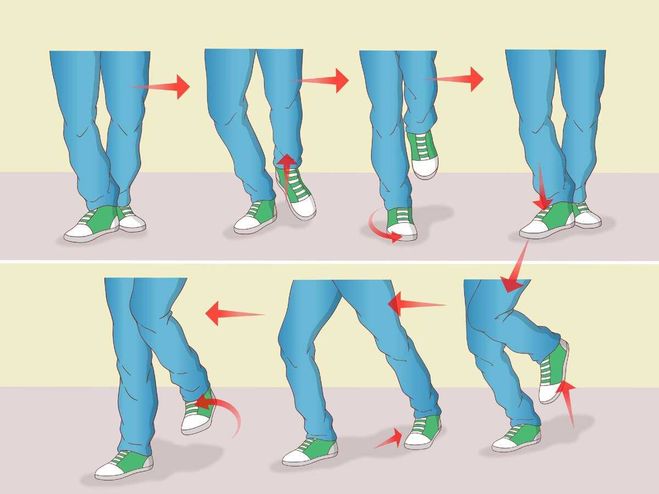 First and foremost, the dancers’ dance movements and range of motion should be established. The dance pose flowchart of the action capture technology of instructional design is shown in Figure 1.
First and foremost, the dancers’ dance movements and range of motion should be established. The dance pose flowchart of the action capture technology of instructional design is shown in Figure 1.
While watching the animation, they draw posture movements in their mind. The actions that they do not understand or do not know can be demonstrated repeatedly from multiple angles. Secondly, students conduct practical demonstration, capture their own actions with high-precision three-dimensional camera, and compare them with teachers’ standard actions. By comparing the dance movements with the teacher’s standard movements in sections through the motion capture system, the shortcomings can be quickly found out, which is convenient for local correction. Motion capture technology is used to assist the teaching and research of dance. The early motion capture was proposed by American Polish Fisher in 1915. His “rotoscope” technology is considered to be the pioneer of motion capture technology. The main principle of this technology is to initially take the action video image taken in reality as the bottom sample of animation depiction, and then the animators depict the required actions frame by frame on this basis. The virtual display platform collects all kinds of dance materials, performs by actors, collects data through motion capture devices, and converts them into data recognizable by 3D animation software, and finally displays the dance content perfectly through the virtual display engine. The motion capture technology is applied to the data acquisition in the tumbling posture process of classical dance, the skeleton motion route of human body is extracted, and then the posture discrimination is obtained by using the feature vector matching method so as to establish the tumbling posture model of classical dance. It is easy to know that the depth of the whole bone tree is 3. The human body can be roughly divided into 11 bone trees, as shown in Figure 2.
The main principle of this technology is to initially take the action video image taken in reality as the bottom sample of animation depiction, and then the animators depict the required actions frame by frame on this basis. The virtual display platform collects all kinds of dance materials, performs by actors, collects data through motion capture devices, and converts them into data recognizable by 3D animation software, and finally displays the dance content perfectly through the virtual display engine. The motion capture technology is applied to the data acquisition in the tumbling posture process of classical dance, the skeleton motion route of human body is extracted, and then the posture discrimination is obtained by using the feature vector matching method so as to establish the tumbling posture model of classical dance. It is easy to know that the depth of the whole bone tree is 3. The human body can be roughly divided into 11 bone trees, as shown in Figure 2.
The matrix algorithm is proved to be a feasible BVH analytical algorithm, as shown in formula (1), on how to convert the correct position and dynamic of bones into animation.
Type indicates said transformation point; indicates the original point; and indicates the transformation matrix.
This formula is especially important when the matrix multiplication is three independent Euler angles, which are not exchangeable to construct the rotation matrix. Rotation matrix is based on the rotation parameters of each axis of the individual rotation matrix, , , , as shown in formula (2), where the composition order is where is rotation matrix; is-axis rotation parameter; is-axis rotation parameter; and is-axis rotation parameter.
The movement of a single bone consists of translation, rotation, and proportional components, which can be combined together and transformed by using homogeneous coordinates. Unless otherwise stated, the order of combination of these different transformations is stated in the form that sufficient transformations will always follow, such as the following formula.
Type is said bone size and is translation matrix.
In most motion capture file formats, the data is derived in a hierarchical way and formula, and formula (3) only gives the local transformation of a certain bone. The local transformation of the skeleton describes its direction in the local coordinate system, which in turn is influenced by the direction of its parent skeleton. Formula (4) lists this combination sequence, in which is the current bone, its mother bone is , and EE represents the root bone of the bone hierarchy.
The local transformation of the skeleton describes its direction in the local coordinate system, which in turn is influenced by the direction of its parent skeleton. Formula (4) lists this combination sequence, in which is the current bone, its mother bone is , and EE represents the root bone of the bone hierarchy.
Using formula (4) and the derivation of local transformation, we can calculate the global position of the origin of each bone and obtain the position of the bone of the origin from the offset information of the hierarchy.
The function interval changes proportionally with the change of , while the physical interval is fixed. When , the function interval is equal to the physical interval. The final optimization we need to complete is to select the classification plane that can maximize the minimum physical interval, as shown in
In the formula, is abbreviated as constraint condition, where .
The direct operation here will be very complex. We set the function interval of the sample closest to the classification interface to 1 by using the characteristic that the function interval changes in proportion to the change of without affecting the physical interval. Then, we transform the original problem into a quadratic programming problem that is easier to solve:where .
Then, we transform the original problem into a quadratic programming problem that is easier to solve:where .
To solve such problems, we usually combine the constraints and optimization problems into one formula through Lagrange factor. The Lagrange equation obtained is as follows:
Pay attention to the order of solution here, which is still to get the minimum physical interval according to first, and finally to maximize the minimum physical interval. First, we find the partial derivative of Lagrange equation to and make it equal to 0. Get the following two equations:
After the above two equations are introduced, we get the duality problem of maximizing the physical interval. This dual problem only contains , and after solving , we can get by bringing it into the formula. The optimal interface is .
Type middle .
Finally, the 3D data acquired by using motion capture technology needs to be presented on the computer in a concrete model, and animation is generated for teaching and playing. Students can compare the learned dance movements with the teacher’s standard movements by segments through the motion capture system, which can quickly find out the shortcomings and facilitate local correction.
Students can compare the learned dance movements with the teacher’s standard movements by segments through the motion capture system, which can quickly find out the shortcomings and facilitate local correction.
4. Design of Recognition Model of Tumbling Posture in Classical Dance
4.1. Tumbling Posture Recognition of Classical Dance Based on Motion Capture Technology
The data acquisition in the tumbling posture process of classical dance is done using motion capture technology, and the skeleton motion route of the human body is extracted, followed by posture discrimination using the feature vector matching method to create the tumbling posture model of classical dance. The different postures of the human body are divided into two categories: static posture and dynamic posture; the recognition process of static action and dynamic action is carried out in the second level, respectively. The disadvantage of this structure is that it has a problem with error transmission, which means that misclassification samples from the first level will flow into the second level, resulting in a second-level classification error.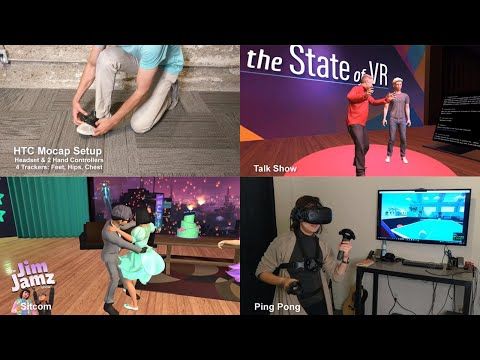 The key to solving this problem is whether the system’s design fully considers the inherent differences between static and dynamic posture, as well as the relative ease with which they can be distinguished. It is possible to interpret and classify multiple sensors at the same time. The results show that the first-grade classification error can be largely ignored, effectively suppressing the error propagation problem. Install 20 data identification points on each part of the dance trainer’s body; then start the high-speed 3D data dynamic capture system while remaining well within the preset space range. The controller recognizes that the trainer has completed all of the preprogrammed basic movements. The dynamic capture system will track the dance movements and match them to the model in this process. The real-time acquisition of human action is completed when the computer successfully identifies and enters 20 data acquisition points into the system.
The key to solving this problem is whether the system’s design fully considers the inherent differences between static and dynamic posture, as well as the relative ease with which they can be distinguished. It is possible to interpret and classify multiple sensors at the same time. The results show that the first-grade classification error can be largely ignored, effectively suppressing the error propagation problem. Install 20 data identification points on each part of the dance trainer’s body; then start the high-speed 3D data dynamic capture system while remaining well within the preset space range. The controller recognizes that the trainer has completed all of the preprogrammed basic movements. The dynamic capture system will track the dance movements and match them to the model in this process. The real-time acquisition of human action is completed when the computer successfully identifies and enters 20 data acquisition points into the system.
Based on the application of motion capture technology to the identification of the tumbling posture content of classical dance, various postures of human body are divided into two categories: one is static posture, and the other is dynamic posture. In the second level, the recognition process of static action and dynamic action is carried out respectively. The writhing gesture recognition form of classical dance based on motion capture technology is the intersection of computer science, educational technology, and educational psychology. By absorbing and learning from new theories, technologies and methods in other fields, the disadvantages of traditional recognition mode can be solved. The virtual display platform collects all kinds of dance materials, performs by actors, collects data through motion capture devices, and converts them into data recognizable by 3D animation software, and finally displays the dance content perfectly through the virtual display engine. After the motion capture system is successfully matched, the data of human motion posture is recorded, and the natural characteristics of human motion from different perspectives can be analyzed by the system software. In this paper, the motion model database uses key joint points to mark the movement changes of human body.
In the second level, the recognition process of static action and dynamic action is carried out respectively. The writhing gesture recognition form of classical dance based on motion capture technology is the intersection of computer science, educational technology, and educational psychology. By absorbing and learning from new theories, technologies and methods in other fields, the disadvantages of traditional recognition mode can be solved. The virtual display platform collects all kinds of dance materials, performs by actors, collects data through motion capture devices, and converts them into data recognizable by 3D animation software, and finally displays the dance content perfectly through the virtual display engine. After the motion capture system is successfully matched, the data of human motion posture is recorded, and the natural characteristics of human motion from different perspectives can be analyzed by the system software. In this paper, the motion model database uses key joint points to mark the movement changes of human body. At present, the connection between key points is mainly rigid connection, which can ensure the stability of dance posture. By comparing the dance movements with the teacher’s standard movements in sections through the motion capture system, the shortcomings can be quickly found out, which is convenient for local correction. Motion capture technology is used to assist the teaching and research of dance.
At present, the connection between key points is mainly rigid connection, which can ensure the stability of dance posture. By comparing the dance movements with the teacher’s standard movements in sections through the motion capture system, the shortcomings can be quickly found out, which is convenient for local correction. Motion capture technology is used to assist the teaching and research of dance.
4.2. Experimental Results and Analysis
In this experiment, taking the left arm movement of the dance trainer as an example, taking the left arm characteristic plane as the basic calculation plane, three discriminant parameters can be obtained, respectively, and the overall motion posture of the left arm can be determined by the above three parameters. Experiments show that the calculation error is effectively reduced, and the results are shown in Table 1.
After completing all teaching hours, the learning situation of the two groups of students is verified through assessment. The college dance teacher scores the range, strength, consistency, and technical standardization of aerobics actions of the two groups of students. The results are determined by SPSS19.0 analysis. The test results are shown in Table 2.
The college dance teacher scores the range, strength, consistency, and technical standardization of aerobics actions of the two groups of students. The results are determined by SPSS19.0 analysis. The test results are shown in Table 2.
represents the significance of the experimental effect, and is generally the most significant. According to the experimental results, the students who learn by motion capture have a better grasp of dance movements than those who learn by routine.
This experiment was completed on a PC with Core (TM) i5-34703.2 GHz CPU and 5 GB memory, and MATLAB was used as the development environment. The created motion database contains 20 sets of dance action segments, each of which has about 1,300 frames. The subjects are randomly selected college students, and all subjects have dance foundation. Three experiments were carried out respectively, and the difference of left arm movement posture was compared. From Figures 3–5, the difference between the movement to be measured and the standard movement was clearly seen.
Through the comparison and verification of the experimental results in Figures 3–5, using the feature plane similarity matching method to analyze the motion posture can clearly and efficiently detect the differences and standards between moving objects and has high robustness, which lays a foundation for the scientific training of dance. Coordination is the basic quality of a dancer. The teaching of turning over covers the correct turning of the waist, the orientation training of hand posture, and the joint cooperation of crotch, leg, knee, foot, and step below the waist. It is a great test and exercise for the cultivation of coordination. If the body, especially turning over, is difficult to complete without coordination; even if it is completed, it will lack the corresponding beauty. Therefore, the coordination of turnover movement training dancers is a key point. Physical training can be divided into three stages: initial stage, middle stage, and later stage.
In this experiment, the peak frequency points in the tumbling posture of classical dance, such as basic turning, step-by-step turning, and step-by-step turning, were compared in two experiments. The experimental results are shown in Figures 6 and 7.
The experimental results are shown in Figures 6 and 7.
From Figures 6 to 7, it can be seen that this feature shows a high degree of discrimination in the three categories of classical dance tumbling posture. At the 8th frame of the sample, the average frequency of step turn is 0.9, which is higher than the average rating of basic turn of 0.75 and that of point turn of 0.5. Therefore, it can be concluded that stepping over is an effective feature, except for some points with loud noise, which is generally stable. In the environment of motion capture equipment, students may have some adaptability problems, which are relatively restrained. However, students can make greater progress by simulating the posture of learning dance training and constantly revising their own learning process, especially in the standardization of dance movements, and students can realize their own shortcomings faster.
5. Conclusions
The motion capture system-based tumbling posture recognition of classical dance will not only play an important role in the protection of national dance, but also in the long-term development of national dance. The display of dances from various cultures can help with dance research, learning, development, and application. This paper examines human motion posture using the real-time characteristics of motion capture technology, proposes a tumbling posture recognition model for classical dance based on motion capture technology, examines the characteristics of human motion posture, examines the development prospects and research significance of using motion capture technology in classical dance, and provides an effective theoretical basis for scientific training. The range, strength, consistency, and technical standardization of aerobics actions of the two groups of students were scored by the dance teacher. The average frequency of step somersault is 0.9, which is higher than 0.75 of the average evaluation rate of basic somersault and 0.5 of point somersault, according to SPSS19.0 analysis. In addition to the large noise, it can be concluded that the overall turning point is effective. The motion capture technology proposed in this paper can recognize basic classical dance tumbling postures with high precision.
The display of dances from various cultures can help with dance research, learning, development, and application. This paper examines human motion posture using the real-time characteristics of motion capture technology, proposes a tumbling posture recognition model for classical dance based on motion capture technology, examines the characteristics of human motion posture, examines the development prospects and research significance of using motion capture technology in classical dance, and provides an effective theoretical basis for scientific training. The range, strength, consistency, and technical standardization of aerobics actions of the two groups of students were scored by the dance teacher. The average frequency of step somersault is 0.9, which is higher than 0.75 of the average evaluation rate of basic somersault and 0.5 of point somersault, according to SPSS19.0 analysis. In addition to the large noise, it can be concluded that the overall turning point is effective. The motion capture technology proposed in this paper can recognize basic classical dance tumbling postures with high precision. The system’s ability to achieve higher-precision recognition of more types of posture on this basis is critical. Dance teaching and research benefit from the use of motion capture technology. The captured specific three-dimensional motion data is transformed into digital abstract motion, the three-dimensional human body motion posture database is established, and the teaching animation video is generated, which helps to optimize the traditional dance learning form, according to the characteristics of real-time tracking, detection, and recording of motion capture technology. The importance of improving educational quality cannot be overstated.
The system’s ability to achieve higher-precision recognition of more types of posture on this basis is critical. Dance teaching and research benefit from the use of motion capture technology. The captured specific three-dimensional motion data is transformed into digital abstract motion, the three-dimensional human body motion posture database is established, and the teaching animation video is generated, which helps to optimize the traditional dance learning form, according to the characteristics of real-time tracking, detection, and recording of motion capture technology. The importance of improving educational quality cannot be overstated.
Data Availability
The data used to support the findings of this study are available from the corresponding author upon request.
Conflicts of Interest
The author does not have any possible conflicts of interest.
References
D. Rodriguez-Martin, A. Samà, C. Perez-Lopez, A. Català, J. Cabestany, and A.
 Rodriguez-Molinero, “SVM-based posture identification with a single waist-located triaxial accelerometer,” Expert Systems with Applications, vol. 40, no. 18, pp. 7203–7211, 2013.
Rodriguez-Molinero, “SVM-based posture identification with a single waist-located triaxial accelerometer,” Expert Systems with Applications, vol. 40, no. 18, pp. 7203–7211, 2013.View at:
Publisher Site | Google Scholar
A. Manfrè, I. Infantino, F. Vella, and S. Gaglio, “An automatic system for humanoid dance creation,” Biologically Inspired Cognitive Architectures, vol. 15, pp. 1–9, 2016.
View at:
Google Scholar
A. Javier, “See how atoms dance,” National Science Review, vol. 7, no. 5, pp. 7-8, 2020.
View at:
Google Scholar
P. Chen, “On traditional Chinese culture: common rhythmical point between traditional opera and classical dance,” Symposium on Health and Education (SOHE 2018), Atlantis Press, pp.
 44–48.
44–48.View at:
Google Scholar
D. Risner and J. Anderson, “Digital Dance Literacy: an integrated dance technology curriculum pilot project1,” Research in Dance Education, vol. 9, no. 2, pp. 113–128, 2008.
View at:
Publisher Site | Google Scholar
G. Sharma, J. Nikolai, S. Duncan, and J. Carter, “Observing the delivery of a curriculum-integrated dance programme across four New Zealand primary schools,” New Zealand Journal of Educational Studies, vol. 55, no. 1, pp. 29–47, 2020.
View at:
Publisher Site | Google Scholar
S. Corazza, L. Mündermann, A. M. Chaudhari, T. Demattio, C. Cobelli, and T. P. Andriacchi, “A markerless motion capture system to study musculoskeletal biomechanics: visual hull and simulated annealing approach,” Annals of Biomedical Engineering, vol.
 34, no. 6, pp. 1019–1029, 2006.
34, no. 6, pp. 1019–1029, 2006.View at:
Publisher Site | Google Scholar
S. W. Park, H. S. Park, J. H. Kim, and H. Adeli, “3D displacement measurement model for health monitoring of structures using a motion capture system,” Measurement, vol. 59, pp. 352–362, 2015.
View at:
Publisher Site | Google Scholar
M. Zhao, A. Jha, Q. Liu et al., “Faster mean-shift: GPU-accelerated clustering for cosine embedding-based cell segmentation and tracking,” Medical Image Analysis, vol. 71, Article ID 102048, 2021.
View at:
Publisher Site | Google Scholar
S. L. Carter, R. Duncan, A. L. Weidemann, and L. S. Hopper, “Lower leg and foot contributions to turnout in female pre-professional dancers: a 3D kinematic analysis,” J Sports, pp.
 1–9, 2018.
1–9, 2018.View at:
Publisher Site | Google Scholar
C. Swain, E. J. Bradshaw, C. L. Ekegren, and D. G. Whyte, “The epidemiology of low back pain and injury in dance: a systematic review,” Journal of Orthopaedic & Sports Physical Therapy, vol. 49, no. 4, pp. 1–41, 2019.
View at:
Publisher Site | Google Scholar
Y. Kim, S. Baek, and B. C. Bae, “Motion capture of the human body using multiple depth sensors,” ETRI Journal, vol. 39, no. 2, pp. 181–190, 2017.
View at:
Publisher Site | Google Scholar
N. F. Bernardi, A. Bellemare-Pepin, and I. Peretz, “Dancing to ‘groovy’ music enhances the experience of flow,” Annals of the New York Academy of Sciences, vol. 1423, pp. 415–426, 2018.
View at:
Publisher Site | Google Scholar
S.
 L. Carter, R. Duncan, A. L. Weidemann, and L. S. Hopper, “Lower leg and foot contributions to turnout in female pre-professional dancers: a 3D kinematic analysis,” J Sports, pp. 1–9, 2018.
L. Carter, R. Duncan, A. L. Weidemann, and L. S. Hopper, “Lower leg and foot contributions to turnout in female pre-professional dancers: a 3D kinematic analysis,” J Sports, pp. 1–9, 2018.View at:
Google Scholar
X. Liu, M. Xu, S. J. Peng, and J. X. Du, “Efficient human motion capture data annotation via multi-view spatiotemporal feature fusion,” IET Signal Processing, vol. 12, no. 3, pp. 269–276, 2017.
View at:
Google Scholar
S. Gaglio, G. L. Re, and M. Morana, “Human activity recognition process using 3-D posture data,” IEEE Transactions on Human-Machine Systems, vol. 45, no. 5, pp. 586–597, 2017.
View at:
Google Scholar
O. J. Urakova, “The philosophical and aesthetic meaning of abdulhamid chulpan’s idea of «if literature is alive, so nation will live,” Asian Journal of Multidimensional Research (AJMR), vol.
 8, no. 4, pp. 179–184, 2019.
8, no. 4, pp. 179–184, 2019.View at:
Publisher Site | Google Scholar
H. Chen, B. E. Garcia, Y. Huang, and N. Poh, “GaitGANv2: invariant gait feature extraction using generative adversarial networks,” Pattern Recognition, vol. 87, pp. 179–189, 2019.
View at:
Google Scholar
W. Nai, L. Yue, D. Rempel, and Y. Wang, “Fast hand posture classification using depth features extracted from random line segments,” Pattern Recognition, vol. 65, pp. 1–10, 2017.
View at:
Publisher Site | Google Scholar
E. C. Warburton, “Emotional character: the prospects for a personality-based perspective on embodied learning in dance,” Theatre, Dance and Performance Training, vol. 11, no. 1, pp. 76–92, 2020.
View at:
Publisher Site | Google Scholar
W.
 Deng, J. Hu, N. Zhang, B. Chen, and J. Guo, “Fine-grained face verification: FGLFW database, baselines, and human-DCMN partnership,” Pattern Recognition, vol. 66, pp. 63–73, 2017.
Deng, J. Hu, N. Zhang, B. Chen, and J. Guo, “Fine-grained face verification: FGLFW database, baselines, and human-DCMN partnership,” Pattern Recognition, vol. 66, pp. 63–73, 2017.View at:
Publisher Site | Google Scholar
J. Pope, K. Helwig, S. Morrison, A. Estep, and S. Caswell, “Multifactorial exercise and dance-based interventions are effective in reducing falls risk in community-dwelling older adults: a comparison study,” Gait & Posture, vol. 70, pp. 370–375, 2019.
View at:
Publisher Site | Google Scholar
M. Maheu, L. Bethani, M. Nooristani, B. Jemel, and A. Delcenserie, “Influence of dance training on challenging postural control task,” Gait & Posture, vol. 69, pp. 31–35, 2019.
View at:
Publisher Site | Google Scholar
T.
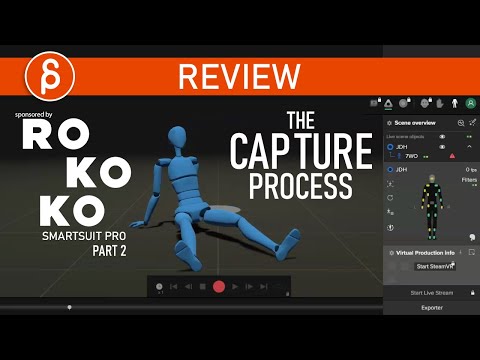 V. S. Christopher, G. W. Douglas, L. E. Christina, and T. Paul, “Multi-segment spine kinematics: relationship with dance training and low back pain - ScienceDirect,” Gait & Posture, vol. 68, pp. 274–279, 2019.
V. S. Christopher, G. W. Douglas, L. E. Christina, and T. Paul, “Multi-segment spine kinematics: relationship with dance training and low back pain - ScienceDirect,” Gait & Posture, vol. 68, pp. 274–279, 2019.View at:
Google Scholar
T. N. Xuan, T. D. Ngo, and T. H. Le, “A spatial-temporal 3D human pose reconstruction framework,” Journal of Information Processing Systems, vol. 15, no. 2, pp. 399–409, 2019.
View at:
Google Scholar
Copyright
Copyright © 2022 Ning Zhang. This is an open access article distributed under the Creative Commons Attribution License, which permits unrestricted use, distribution, and reproduction in any medium, provided the original work is properly cited.
Mockup educational program - everything you need to know about mockups
Often we want to show our work in a beautiful and interesting way, but it is not always possible to do this by simply posting the work itself. The presentation looks much more interesting, where the pictures seem to be drawn in an album or used on product labels, for this, mockups are needed.
The presentation looks much more interesting, where the pictures seem to be drawn in an album or used on product labels, for this, mockups are needed.
Mockup (or mock-up in English) is a specially prepared file in which you can place your design on real objects. They are needed to show how the picture will look in real life. Usually this is a PSD file with a smart object, on which the picture with the design is inserted. There are also just JPEG pictures, called mocaps, but working with them is difficult, you need to distort the picture for a long time and fit it into the environment. nine0003
Smart objects are really cool stuff. If you ever reduced the image in Photoshop, and then stretched it to a large size, you probably got something like this story, because Photoshop distorts the files.
Same with fonts and effects. In order to avoid this, it is worth turning all elements into smart objects. To create a Smart Object, open any image in Photoshop. Next, convert the background layer to normal (editable), to do this, double-click on it and click OK, or create a duplicate of it, to do this, press the key combination Ctrl + J. Then, right-clicking on the converted/duplicated layer from the context menu, select "Convert to Smart Object". Once you've done this, a small icon will appear on your layer's thumbnail to indicate that the layer is a Smart Object. nine0003
Then, right-clicking on the converted/duplicated layer from the context menu, select "Convert to Smart Object". Once you've done this, a small icon will appear on your layer's thumbnail to indicate that the layer is a Smart Object. nine0003
Essentially, a smart object is a container whose changes do not affect the object inside. You can stretch, reduce, apply effects without losing the quality of the picture or font. By default, by the way, all pictures that are dragged into Photoshop become smart objects.
Editing smart objects occurs as editing a separate file in a separate window (a temporary .psb file is created, linked to the main file). Changing and saving this file changes the main picture. nine0003
Mockups are very easy to use.
- Download the desired PSD, open it and look for a layer with the approximate name “Your design here” or something similar.
- Double click on the smart layer icon - a new window opens, where you need to drag your pattern or picture.

- After that, close this window by selecting “Yes” when asked if you want to save.
That's it, in the source file your picture is distorted and fits into the object. At any time, the picture can be replaced or moved, again repeating all the steps above. nine0003
There are now a huge number of resources where you can find mockups for your own needs to show your work in the best light. Here are some resources where you can find good mockups for free.
http://freedesignresources.net/category/free-mockups/
http://store.mockupzone.com/free-files/
http://graphicburger.com/mock-ups/
https://www.mockupworld.co/all-mockups/
http://www.graphicsfuel.com/category/mockup-templates/
https://pixelbuddha.net/freebies/tag/mockups
Big collection of free mockups from Behance https://www.behance.net/collection/20880985/Best-Free-Mockup
In fact, mockups are not very difficult to make yourself, having basic Photoshop skills.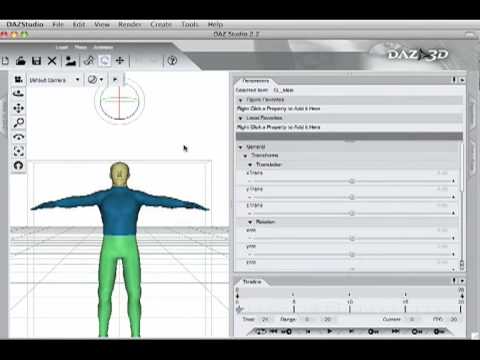 Here is a great video showing how to make a mockup using a t-shirt as an example, the sequence of work can be transferred instead of a t-shirt to any other item.
Here is a great video showing how to make a mockup using a t-shirt as an example, the sequence of work can be transferred instead of a t-shirt to any other item.
Display your work beautifully - use mockups 💙
#for authors #demonstration_of_work #mockup #free #design #mockup #educational program
60+ best magazine mockups
Among the variety of design templates, magazine and brochure mockups are one of the most important tools for effectively presenting the results of your work to your next client.
As our team is heavily involved in product creation, we recognize the importance of print mockups and use this presentation tool over and over again. Magazine mockups are almost always our favorites. Branding, photography, typography, graphics, social media: there is hardly a creative project that does not have a place for them.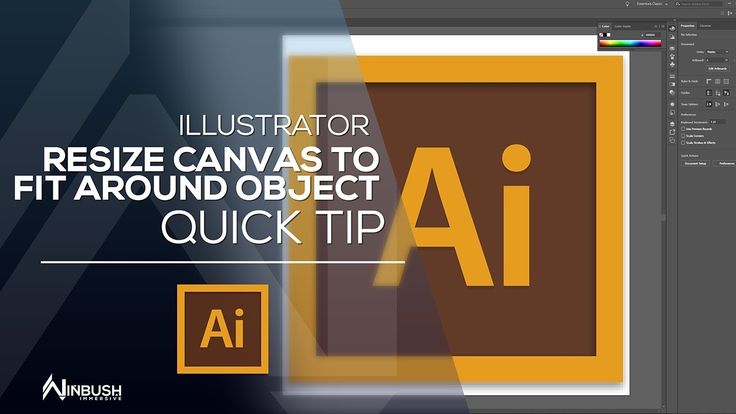 nine0064
nine0064
A high-quality magazine mockup always catches the eye - it is made with taste, with special attention to detail. Many designers masterfully create such mockups, so there are many really interesting, eye-catching options.
Just take a look at all of these premium and free templates that we have collected in this article. Covers and spreads, square and standard formats - everyone will find something visually appealing here!
1. Mockup magazine (A4 format) - the choice of our team ⭐️
It is impossible to imagine an impressive presentation of a new design without a quality mockup. There are many of them - from stationery and clothing to interior items and other familiar things. Just choose the mockup that will show your creation from the best side.
If you don't have time to sort through the available options or just can't decide on something specific, we offer you these excellent templates. The set includes Letter and A4 magazine mockups with thoughtful shading, backgrounds, and other details to make your presentation perfect.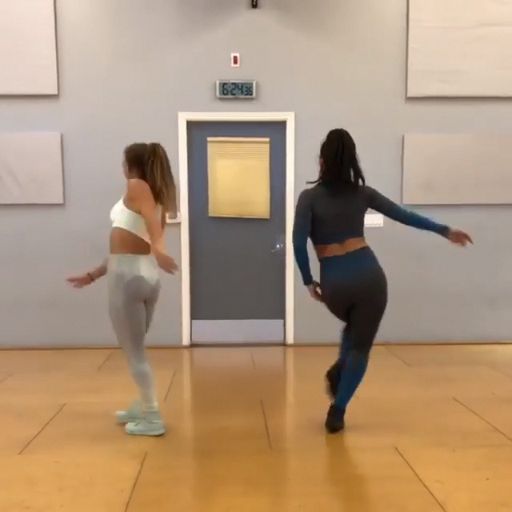 nine0003
nine0003
2. Stylish cover mockup
Think these photos were taken with professional studio equipment? No, the only thing that was used in creating the mockup presented here is a sense of composition, seasoned with special attention to detail. Take, for example, placeholder images: a magazine cover and an A4 document look very stylish.
Want to freshen up the picture? 3 overlays with shadows of different shapes, as well as a collection of backgrounds will do this task in seconds and give the mockup the right mood. nine0003
3. Double Cover Mockup
This free mockup set contains everything you need for a brilliant magazine presentation: PSD files with realistic images, shadows and textures. It takes a few seconds to customize a template with Photoshop Smart Objects: just open it, add your graphics, and save the result. Here you can also customize different parameters - light, shadows, background.
4. Stack of Magazines
Add another image to your collection of minimal fashion magazine mockups that looks fresh, neat and stylish! Any magazine can be removed from the stack: decide for yourself whether to leave all or only the most suitable ones.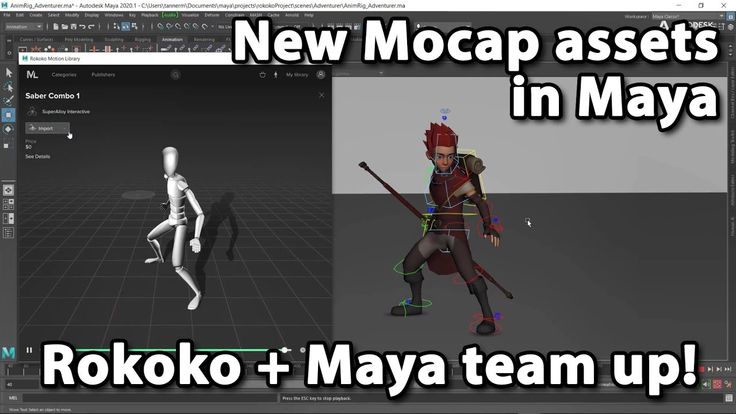 nine0003
nine0003
Everything is designed to make it easy and convenient for you. Experiment with shadows and lighting, but remember that everything is already perfectly set. Insert your photos, logos, corporate identity elements and set sail on the ocean of inspiration!
5. Magazine spread mockup
Magazine mockups aren't always full of complex visuals, rich color combinations, or eye-catching details. Generally white, minimalistic, neat templates can seem boring and too simple. But don't jump to conclusions! nine0003
Check out this magazine mockup! There are no additional decorative elements in the file, only 3 three-dimensional blocks, so nothing will distract viewers from the content itself.
6. Magazine Mockup Landscape
Solid, elegant, minimalistic magazine mockup will never let you down. And if it can also be customized to your liking, the workflow becomes much more interesting.
Create a photorealistic image by choosing one of the 3 available shadow overlays and one of the 4 background textures.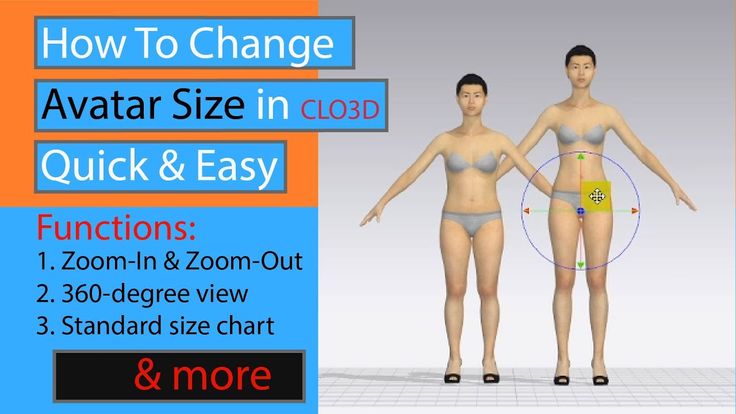 Any graphics will do: photos, icons, illustrations, posters, collages and more. nine0003
Any graphics will do: photos, icons, illustrations, posters, collages and more. nine0003
7. Open square magazine
Of course, this magazine cannot be leafed through at your leisure, but its spread can be decorated with any photo, text or image. A square magazine mockup is not uncommon, and with another free template in your arsenal, you will instantly turn your design into a bestseller. In fact, any idea can be brought to life if you have the right tool, and this mockup is exactly what you need.
8. Fashion magazine cover mockup
One click here, one click there, and the project is almost ready for release—that's how this flawless A4 magazine mockup works. I'm not saying that you won't need your professional skills at all, but everything really looks perfect: just fill the right layers with your content without breaking your head over the composition.
Additionally, you can adjust the background color and add realistic shadows. Create an aerial scene inspired by nature to wow your audience!
9.
 Magazine cover mockup
Magazine cover mockup This is exactly the case when the background decides everything! Soft natural shades and a few sprigs of lavender: this is the ultimate recipe for the success of this mockup. Combine this with a simple smart object customization process and high quality, and this free mockup is a great tool for presenting printed materials and typography.
10. Magazine spread mockup
Imagine you are leafing through a fashion magazine sitting on the summer terrace of your favorite cafe. But instead of celebrities and trends, its pages feature your unique designs that radiate inspiration. Minimalism, realistic shadows, neat composition - what else do you need for a beautiful presentation? This mockup is the key to your success! nine0003
11. Magazine among the flowers
Let yourself be lost among the flowers — complement the design of the cover of the magazine with green leaves and stems. Feature-packed and whimsical, this mockup will take its rightful place in your tool collection, whether you're designing logos, packaging or corporate identity. It will appeal to professionals who want their presentations to look original and fresh.
It will appeal to professionals who want their presentations to look original and fresh.
12. Free Square Magazine Mockup
Add another free mockup to your collection of minimalistic templates, neat and stylish. A professional quality PSD file will let you discover and immerse yourself in the understated aesthetic. Just look at these details! nine0003
13. Magazine mockup (A5 format)
Stylish and concise A5 magazine mockup for displaying printed products, illustrations and photos. Add your own graphics with a couple of clicks using Smart Object Layers and the super realistic mockup is ready to grab your audience's attention!
14. Magazine mockup set
Total freedom! You can customize any of the 3 free mockups as you wish. Add your design and change background textures with Smart Objects - it's very easy. Don't forget that you can also customize shadows, highlights and other effects to get the perfect result. Make the most of these photorealistic images! nine0003
15.
 Magazine Mockup (A4 Size)
Magazine Mockup (A4 Size) Whether you want to showcase the inside of a magazine or just the cover, this mockup lets you create a stunning, professional presentation in seconds.
You can easily add your own design using Smart Objects. Photos, illustrations, infographics - feel the creative freedom and fill the template with the content you like.
16. Scandinavian style magazine mockup
Let's get into whimsical Scandinavian style and create a hygge presentation with these new mockups! Inspired by the aesthetics of Kinfolk magazine, this set includes 2 high-quality cover mockups, as well as 2 shadow overlays to help you make the image as realistic as possible. The final touch is 4 background textures in the best traditions of the Scandinavian style.
17. Cover Mockup (A4 Size)
This magazine cover mockup (top view) is a real treasure for anyone who loves the textures of natural materials. Marble and stone come together in a contemporary composition designed to showcase your print and branding projects.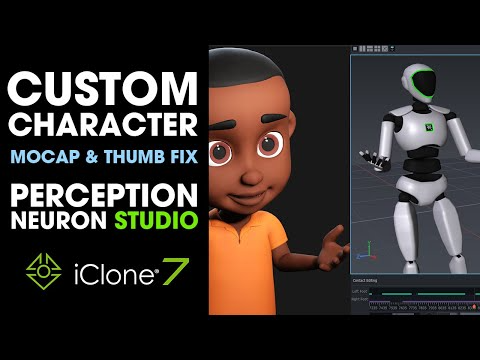 Every detail of this PSD mockup can be quickly edited and customized to your liking: add your own graphics, fix shadows to match the image in your head! nine0003
Every detail of this PSD mockup can be quickly edited and customized to your liking: add your own graphics, fix shadows to match the image in your head! nine0003
18. Magazine mockup with interesting shadows
Present your corporate identity in a unique way with this collection of mockups with editable backgrounds and realistic shadows. With 25 shadow options, free fonts, 11 background options, and 2 popular formats, you now have everything you need to create flawless, impressive images in your arsenal.
Choose your angle and use this mockup as part of your creative process. Then all eyes will be on your design! nine0003
19. Minimalist Magazine Mockup
This quality mockup is a great choice for those who strive for perfection. The image is an open magazine and cover so that you can effectively present the result of your creative work. You can add design to a mockup using smart objects. The process is intuitive - you only need basic knowledge of Photoshop.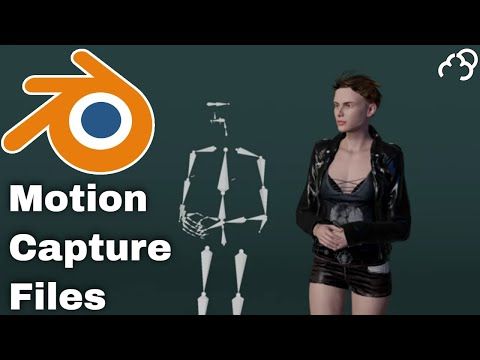
20. Fashion magazine mockup
The dream of any creative specialist is to have his photographs or work printed in the best-selling magazines, the ones that inspired him when his career was just beginning. nine0003
Organized files, realistic shadows and 3 interchangeable backgrounds - you have everything you need for a perfect presentation! Choose from two PSD files, A4 or Letter sized magazine mockup, and let nothing stop you from creating your masterpiece.
21. Magazine Mockup Set
Just look at this exceptionally high quality paper and you will be tempted to add these mockups to your collection of design tools. This is one of the best solutions for presenting a design to a client or audience. Set up a mockup in a couple of clicks: since all files are in PSD format, they can be edited using smart objects. nine0003
22. Double magazine cover mockup
Double cover mockup for presenting your print designs. The paper looks very high quality, so you immediately want to add it to your collection. Use a mockup for any projects you are working on to collect thousands of likes and attract hundreds of new subscribers! Just add your own graphics with smart objects.
Use a mockup for any projects you are working on to collect thousands of likes and attract hundreds of new subscribers! Just add your own graphics with smart objects.
23. Free magazine mockup
Present a variety of projects - in the field of fashion, business, interior design, gastronomy, etc. — with this modern trending magazine mockup. It's available in PSD format, so you can easily add designs here with smart objects or change the background color. You will simply charm the client with your work! nine0003
24. Set of 43 Magazine Mockups
Introducing a huge collection of mockups that can be used to create an impressive presentation of print and advertising designs. This exclusive set includes 16 A4 portrait magazines, 15 landscape A4 magazines, 4 US letter magazines and 8 square mockups. Each element is presented in HD quality and has many settings.
25. Minimal Flying Brochure Mockup
Are you a big fan of minimalism? Then meet the stunning mockup (US letter format) that will help you present the inside pages of your brochure in an exceptionally attractive way. The free PSD file includes smart objects, as well as ordered layers for customizing shadows, effects, and backgrounds. The kit includes a file with all the instructions - setup has never been so easy!
The free PSD file includes smart objects, as well as ordered layers for customizing shadows, effects, and backgrounds. The kit includes a file with all the instructions - setup has never been so easy!
26. Ocher Mockup Builder
Ocher Mockup Set is a photography-based builder with natural sunlight and leaf shadows. This is the perfect solution for creating authentic, realistic magazine presentations. nine0003
Using Smart Objects, you can easily insert your own designs with just a few clicks. In addition, mockups can be duplicated and changed, so your possibilities are truly endless.
With textures, sunlight and shadows, the mockup will look perfect in your portfolio, online store or social networks. It will help create a natural unique atmosphere.
27. Embossed Magazine Mockup
This mockup set has everything you need to showcase printed materials and photos or present a magazine. The set includes 13 layered PSD files: magazine in perspective, top view, magazine in hands (3 versions) and of course the cover and spread. The mockups are easy to customize to suit your needs, and as a bonus, you can add foil stamping, as shown in the preview. nine0003
The mockups are easy to customize to suit your needs, and as a bonus, you can add foil stamping, as shown in the preview. nine0003
28. Opened magazine mockups
Magazine spread mockup that can also be used to present a paperback book or catalogue. Add page design with smart objects to present corporate identity, photos, illustrations. In addition, you can post the corresponding image on social networks.
The free magazine mockup was created in Cinema 4D and rendered with Redshift Render, so the high quality is another reason to download this resource right now! nine0003
29. Square Magazine Mockup
Square magazine mockup (top view), also suitable for presenting a paperback book or square catalogue. Redesign the cover and inside pages and tailor the composition to your creative needs.
Photos and illustrations, typography and polygraphy, text snippets and any other content - whatever your personal or commercial project, feel free to use this mockup!
30.
 Brochure/magazine mockup (US letter format)
Brochure/magazine mockup (US letter format) Set of 9 brochure/magazine mockups that you can easily customize to fit your project. Move objects freely, change background color and texture, customize shadows. The set includes 3 textures and 3 letter styles - everything you need to create a realistic image is here.
Just choose one - magazine cover or spread, prepare your graphics and create an impressive presentation of corporate identity, print, advertising, photography, illustrations or even infographics - there are no limits! nine0003
31. Free magazine mockup
Customizable free magazine mockup in A4 size. To present your design on the inside page or cover, you need to add it to the PSD file using Smart Objects.
Although the magazine itself is the centerpiece of the composition, additional details can be seen around: iPad Pro, ink pen and plant pot. All elements are placed on separate layers, so you can customize the shadows, colors and effects, as well as change the background color. All this will make your presentation unique. nine0003
All this will make your presentation unique. nine0003
32. Stylish magazine mockup
Amazing high resolution magazine mockup. It looks natural and includes many customization options. Both the cover and the spread are in A4 and US letter formats.
A total of 16 pre-made scenes, 10 background textures, realistic shadows, lighting overlays and more! Just add your image using smart objects and change the available options. The kit also includes step by step instructions.
33. Gravity-Defying Magazine Mockup
This gravity-defying magazine mockup allows you to realistically show what a magazine spread will look like. To add your design, you need to place it inside a Smart Object and you will instantly get a flawless result. Presenting a branding, ad or poster has never been easier - this mockup is a compelling message in itself!
34. Magazine in hand
Create neat presentations with this easy-to-use mockup set. The magazine is presented in 4 angles, each in US letter format. To create a unique image, choose from 8 ready-made realistic backgrounds and quickly edit your PSD file with Smart Objects. Just insert your graphics and you're done! If you still have questions about the customization process, refer to the instructions that are included in the kit. nine0003
To create a unique image, choose from 8 ready-made realistic backgrounds and quickly edit your PSD file with Smart Objects. Just insert your graphics and you're done! If you still have questions about the customization process, refer to the instructions that are included in the kit. nine0003
35. Photorealistic Magazine Mockup
Be enchanted by the matte black background and the incredibly stylish mockup. This photorealistic PSD template will help you elegantly showcase what a magazine spread will look like. Adding your graphics to a layered file is very simple - smart objects are used for this. Both light and dark designs would look great here!
36. Square Magazine Mockup Set
Functional square magazine mockups that are easy to edit. Here are both covers and spreads. The kit contains everything you need to create a realistic presentation, whether it's for print design, branding or advertising. Also, with this mockup, you can present an already existing magazine in a professional way. nine0003
nine0003
Customizing any of the 8 templates will not take much time, because all layers and folders are organized, instructions are included in the set, and the background perspective changes automatically.
37. Magazine Mockup (A5 Size)
This versatile mockup allows you to create different compositions in a single PSD file, making it ideal for showcasing magazine designs. The set includes a template for the cover and spread, both of high quality and editable. All you have to do is place your work inside the Smart Object and your perfect presentation will be ready in no time! nine0003
38. Altea - Mockup Maker
Create beautiful, minimalistic presentations with Altea, the mockup maker. This tool is great for showcasing not only magazines, but also corporate style guides, workbooks, and other free resources that you'll probably want to share with your audience!
The magazines are available in A4 and US letter sizes. The builder includes isolated layers with the most natural shadows and background textures created from high quality photographs. This makes it easy to create authentic and beautiful images. nine0003
This makes it easy to create authentic and beautiful images. nine0003
39. Thick magazine mockup
Here is an unusual cover mockup — the magazine seems to be buried in soft, warm sand! A few manipulations with your graphics and smart objects, and a great presentation of the work is ready. Photography, book or magazine cover design, branding, typography - use this mockup to show any design in real life.
40. Square Magazine Mockup
Square magazines are artistically laid out on a minimalist surface with a slight shadow - the epitome of a spectacular presentation of quality design. Add several works at the same time: the cover and spread of the magazine pages may differ depending on what exactly you want to put there. Easy navigation will be a nice bonus to this perfect composition! nine0003
41. 2 free magazine mockups (US letter format)
Two free US letter mockups perfect for minimalist presentations. Layered and easily editable. You can adjust different parameters: shadows, backgrounds, floor. Each mockup has 2 smart objects. The first is for changing the cover design, and the second is for the spine.
Each mockup has 2 smart objects. The first is for changing the cover design, and the second is for the spine.
42. Magazine cover mockup
This mockup evokes the best interior solutions: the contrast of minimalistic stone surfaces and light pastel-colored elements. nine0003
It always looks stylish and expensive, so why not borrow an idea for a design presentation?
Download this set of A4 and US magazine mockups expertly laid out on a concrete surface. Light shadows and sunbeams casually fall on the cover, giving the composition a natural, soothing look.
43. Girl holding a magazine
Hold onto your favorite magazine and use this awesome mockup to showcase it to your audience. The template is a 4000 x 2618 px PSD file. It is based on a high-resolution photo of a tattooed woman holding a magazine (or maybe it's a paperback book). So just decide what kind of presentation you want to make, and the mockup will do everything for you. nine0003
44.
 Magazine Mockup Set
Magazine Mockup Set Create neat presentations with this easy-to-use, thoughtful mockup set that includes 4 professional PSD files. Put your design in a smart object and you'll get results in seconds.
If you're an advanced user, try tweaking the image, playing with layers and opacity to get the effect you want. All elements - textures, shadows, colors, backgrounds - can be moved and adjusted as you wish. nine0003
45. Realistic Magazine Mockup
Present a magazine spread, article, or ad realistically with this editable PSD magazine mockup. Use the built-in tools to achieve impressive results. Just drag and drop your design into the PSD file and Smart Objects will do the work for you.
46. Square Magazine / Brochure Mockup
Want to save time and grab your brand's attention from your audience? Then this photorealistic square brochure mockup is just for you. It's very easy to add your design here: double-click on the smart object layer, copy and paste your artwork, save, and you're done. nine0003
nine0003
6 PSD templates, bonus background textures, ordered layers and an illustrated guide! Your presentation has never looked so perfect.
47. Magazine cover mockup
Is there anything more mesmerizing than the combination of a clean white surface, high quality paper and delicate olive branches? No, these are not our fantasies. This free magazine cover mockup is sure to be the prettiest in your collection. This is a win-win option, no matter what you want to present - printing, thematic content or corporate identity. nine0003
48. Great collection of magazine mockups
Make your presentations stand out with this mockup set! Choose from the four most common sizes. A landscape orientation mockup is perfect for a brand book, while A4, US and square mockups are truly versatile.
There are 2 types of binding available for each mockup: saddle stitch and glue binding. You can add special effects such as gold foil or holographic printing. In total, you will receive 52 mockups (13 for each size) and 30 high-quality textures that will make your creative process even more enjoyable and convenient. nine0003
nine0003
49. Magazine spread mockup
Photos, illustrations, articles, layouts, typography - whatever you want to demonstrate, this mockup will be your best assistant. A minimalist composition will highlight your work. Customizing a PSD file is very easy. All you have to do is put the design into a Smart Object, hit save, and you're done.
50. Magazine Mockup (US letter format)
Download this magazine mockup to present your creative projects in style. The set includes 5 PSD templates with interchangeable backgrounds, realistic effects and shadows. All files contain smart objects and well-organized layers: this will help you customize the image according to your preferences. nine0003
Use Photoshop to edit and create unlimited designs in minutes.
51. Open Magazine Mockup
Present your design effectively with this perfect magazine mockup (A5 and A4). Whatever it was about - printing products, book covers, typography, advertising - he will perfectly cope with the task. You can quickly add your own graphics to the template using smart objects and change the background color.
You can quickly add your own graphics to the template using smart objects and change the background color.
52. 3 free magazine mockups
Download this set to present your magazine design to a client or audience, both cover and pages. You will receive 3 mockups to create a compelling presentation of a magazine or paperback concept.
In addition, you can combine 3 mockups into one composition to show all the results of your work at once. Use smart objects and layers to customize shadows, lighting effects, backgrounds.
53. 4 Free Magazine Mockups
No need to choose between a spread and cover mockup - this free pack includes both! You will find 4 PSD templates here that are very easy to use thanks to smart objects. To add your design, all you have to do is open the Smart Object, place a graphic in it, and click Save. nine0003
54. Magazine mockup maker
Here is a maker that allows you to create sophisticated, unique high-resolution images for design presentation. It is very easy to edit the composition to your liking - a simple file with step-by-step instructions will help you with this.
It is very easy to edit the composition to your liking - a simple file with step-by-step instructions will help you with this.
Use the included shadow overlays, additional decorative elements, interchangeable backgrounds and color filters to make the result more expressive.
55. Free magazine mockup (A4 format)
This free 3D mockup is great for branding, advertising and more. With it, you can present your online course or draw everyone's attention to the magazine. This is a PSD file with smart objects, so you can easily customize whatever you want.
56. Magazine Mockup (Letter)
Complete your instrument collection with this letter magazine mockup. Edit any parameters, including shadows and lighting. A mockup will help you present your illustrations, photos or any other projects in the best way to the audience. You just need to paste your design into a smart object and save your work! nine0003
57. A stack of magazines
Introducing a free mockup pack that includes 4 PSD templates. This 3D file is suitable for corporate identity presentation, promotional material and more. You can even use it to promote an online course! Mockups contain smart objects, so you can customize them in Photoshop in a couple of clicks.
This 3D file is suitable for corporate identity presentation, promotional material and more. You can even use it to promote an online course! Mockups contain smart objects, so you can customize them in Photoshop in a couple of clicks.
58. Magazine Cover Mockup
Buy this beautiful set of 2 mockups to present your work in the most effective way. In addition to the PSD templates, you'll get stunning shadow overlays and hand-picked backgrounds. nine0003
Given the extensive customization options, this is more of a small builder than just a bunch of mockups. Create all sorts of compositions, feel free to experiment with shadows and backgrounds.
59. Free Brochure Mockup (A4)
Another magazine mockup for your collection! This time we have a matte paperback version. The mockup looks neat and elegant. You can use it for free in personal and commercial projects. The set includes 7 professional PSD templates - any of them will make your presentation as realistic as possible.
